- See us on facebook
- See us on twitter
- See us on youtube
- See us on linkedin
- See us on instagram

Stanford Medicine study flags unexpected cells in lung as suspected source of severe COVID
A previously overlooked type of immune cell allows SARS-CoV-2 to proliferate, Stanford Medicine scientists have found. The discovery has important implications for preventing severe COVID-19.
April 10, 2024 - By Bruce Goldman
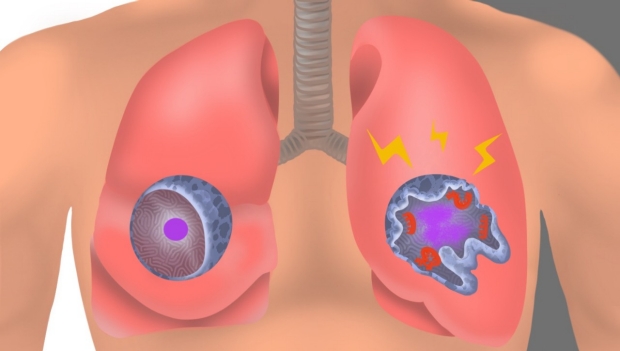
In an uninfected interstitial macrophage, the nucleus (purple) and outer cell membrane (blue) are intact. In an infected interstitial macrophage, the nucleus is shattered, copious newly made viral components (red) clump together, and the cell broadcasts inflammatory and scar-tissue-inducing chemical signals (yellow). Emily Moskal
The lung-cell type that’s most susceptible to infection by SARS-CoV-2, the virus that causes COVID-19, is not the one previously assumed to be most vulnerable. What’s more, the virus enters this susceptible cell via an unexpected route. The medical consequences may be significant.
Stanford Medicine investigators have implicated a type of immune cell known as an interstitial macrophage in the critical transition from a merely bothersome COVID-19 case to a potentially deadly one. Interstitial macrophages are situated deep in the lungs, ordinarily protecting that precious organby, among other things, engorging viruses, bacteria, fungi and dust particles that make their way down our airways. But it’s these very cells, the researchers have shown in a study published online April 10 in the Journal of Experimental Medicine , that of all known types of cells composing lung tissue are most susceptible to infection by SARS-CoV-2.
SARS-CoV-2-infected interstitial macrophages, the scientists have learned, morph into virus producersand squirt out inflammatory and scar-tissue-inducing chemical signals, potentially paving the road to pneumonia and damaging the lungs to the point where the virus, along with those potent secreted substances, can break out of the lungs and wreak havoc throughout the body.
The surprising findings point to new approaches in preventing a SARS-CoV-2 infection from becoming a life-threatening disease. Indeed, they may explain why monoclonal antibodies meant to combat severe COVID didn’t work well, if at all — and when they did work, it was only when they were administered early in the course of infection, when the virus was infecting cells in the upper airways leading to the lungs but hadn’t yet ensconced itself in lung tissue.
The virus surprises
“We’ve overturned a number of false assumptions about how the virus actually replicates in the human lung,” said Catherine Blish , MD, PhD, a professor of infectious diseases and of microbiology and immunology and the George E. and Lucy Becker Professor in Medicine and associate dean for basic and translational research.
Blish is the co-senior author of the study, along with Mark Krasnow , MD, PhD, the Paul and Mildred Berg Professor of biochemistry and the Executive Director of the Vera Moulton Wall Center for pulmonary vascular disease.
“The critical step, we think, is when the virus infects interstitial macrophages, triggering a massive inflammatory reaction that can flood the lungs and spread infection and inflammation to other organs,” Krasnow said. Blocking that step, he said, could prove to be a major therapeutic advance. But there’s a plot twist: The virus has an unusual way of getting inside these cells — a route drug developers have not yet learned how to block effectively — necessitating a new focus on that alternative mechanism, he added.

Catherine Blish
In a paper published in Nature in early 2020, Krasnow and his colleagues including then-graduate student Kyle Travaglini, PhD — who is also one of the new study’s co-lead authors along with MD-PhD student Timothy Wu — described a technique they’d worked out for isolating fresh human lungs; dissociating the cells from one another; and characterizing them, one by one, on the basis of which genes within each cell were active and how much so. Using that technique, the Krasnow lab and collaborators were able to discern more than 50 distinct cell types, assembling an atlas of healthy lung cells.
“We’d just compiled this atlas when the COVID-19 pandemic hit,” Krasnow said. Soon afterward, he learned that Blish and Arjun Rustagi , MD, PhD, instructor of infectious diseases and another lead co-author of the study, were building an ultra-safe facility where they could safely grow SARS-CoV-2 and infect cells with it.
A collaboration ensued. Krasnow and Blish and their associates obtained fresh healthy lung tissue excised from seven surgical patients and five deceased lung donors whose lungs were virus-free but for one reason or another not used in transplants. After infecting the lung tissue with SARS-CoV-2 and waiting one to three days for the infection to spread, they separated and typed the cells to generate an infected-lung-cell atlas, analogous to the one Krasnow’s team had created with healthy lung cells. They saw most of the cell types that Krasnow’s team had identified in healthy lung tissue.
Now the scientists could compare pristine versus SARS-CoV-2-infected lungs cells of the same cell type and see how they differed: They wanted to know which cells the virus infected, how easily SARS-CoV-2 replicated in infected cells, and which genes the infected cells cranked up or dialed down compared with their healthy counterparts’ activity levels. They were able to do this for each of the dozens of different cell types they’d identified in both healthy and infected lungs.
“It was a straightforward experiment, and the questions we were asking were obvious,” Krasnow said. “It was the answers we weren’t prepared for.”
It’s been assumed that the cells in the lungs that are most vulnerable to SARS-CoV-2 infection are those known as alveolar type 2 cells. That’s because the surfaces of these cells, along with those of numerous other cell types in the heart, gut and other organs, sport many copies of a molecule known as ACE2. SARS-CoV-2 has been shown to be able to grab onto ACE2 and manipulate it in a way that allows the virus to maneuver its way into cells.
Alveolar type 2 cells are somewhat vulnerable to SARS-CoV-2, the scientists found. But the cell types that were by far the most frequently infected turned out to be two varieties of a cell type called a macrophage.
Virus factories
The word “macrophage” comes from two Greek terms meaning, roughly, “big eater.” This name is not unearned. The air we inhale carries not only oxygen but, unfortunately, tiny airborne dirt particles, fungal spores, bacteria and viruses. A macrophage earns its keep by, among other things, gobbling up these foreign bodies.

Mark Krasnow
The airways leading to our lungs culminate in myriad alveoli, minuscule one-cell-thick air sacs, whichare abutted by abundant capillaries. This interface, called the interstitium, is where oxygen in the air we breathe enters the bloodstream and is then distributed to the rest of the body by the circulatory system.
The two kinds of SARS-CoV-2-susceptible lung-associated macrophages are positioned in two different places. So-called alveolar macrophages hang out in the air spaces within the alveoli. Once infected, these cells smolder, producing and dribbling out some viral progeny at a casual pace but more or less keeping a stiff upper lip and maintaining their normal function. This behavior may allow them to feed SARS-CoV-2’s progression by incubating and generating a steady supply of new viral particles that escape by stealth and penetrate the layer of cells enclosing the alveoli.
Interstitial macrophages, the other cell type revealed to be easily and profoundly infected by SARS-CoV-2, patrol the far side of the alveoli, where the rubber of oxygen meets the road of red blood cells. If an invading viral particle or other microbe manages to evade alveolar macrophages’ vigilance, infect and punch through the layer of cells enclosing the alveoli, jeopardizing not only the lungs but the rest of the body, interstitial macrophages are ready to jump in and protect the neighborhood.
At least, usually. But when an interstitial macrophage meets SARS-CoV-2, it’s a different story. Rather than get eaten by the omnivorous immune cell, the virus infects it.
And an infected interstitial macrophage doesn’t just smolder; it catches on fire. All hell breaks loose as the virus literally seizes the controls and takes over, hijacking a cell’s protein- and nucleic-acid-making machinery. In the course of producing massive numbers of copies of itself, SARS-CoV-2 destroys the boundaries separating the cell nucleus from the rest of the cell like a spatula shattering and scattering the yolk of a raw egg. The viral progeny exit the spent macrophage and move on to infect other cells.
But that’s not all. In contrast to alveolar macrophages, infected interstitial macrophages pump out substances that signal other immune cells elsewhere in the body to head for the lungs. In a patient, Krasnow suggested, this would trigger an inflammatory influx of such cells. As the lungs fill with cells and fluid that comes with them, oxygen exchange becomes impossible. The barrier maintaining alveolar integrity grows progressively damaged. Leakage of infected fluids from damaged alveoli propels viral progeny into the bloodstream, blasting the infection and inflammation to distant organs.
Yet other substances released by SARS-CoV-2-infected interstitial macrophages stimulate the production of fibrous material in connective tissue, resulting in scarring of the lungs. In a living patient, the replacement of oxygen-permeable cells with scar tissue would further render the lungs incapable of executing oxygen exchange.
“We can’t say that a lung cell sitting in a dish is going to get COVID,” Blish said. “But we suspect this may be the point where, in an actual patient, the infection transitions from manageable to severe.”
Another point of entry
Compounding this unexpected finding is the discovery that SARS-CoV-2 uses a different route to infect interstitial macrophages than the one it uses to infect the other types.
Unlike alveolar type 2 cells and alveolar macrophages, to which the virus gains access by clinging to ACE2 on their surfaces, SARS-CoV-2 breaks into interstitial macrophages using a different receptor these cells display. In the study, blocking SARS-CoV-2’s binding to ACE2 protected the former cells but failed to dent the latter cells’ susceptibility to SARS-CoV-2 infection.
“SARS-CoV-2 was not using ACE2 to get into interstitial macrophages,” Krasnow said. “It enters via another receptor called CD209.”
That would seem to explain why monoclonal antibodies developed specifically to block SARS-CoV-2/ACE2 interaction failed to mitigate or prevent severe COVID-19 cases.
It’s time to find a whole new set of drugs that can impede SARS-CoV-2/CD209 binding. Now, Krasnow said.
The study was funded by the National Institutes of Health (grants K08AI163369, T32AI007502 and T32DK007217), the Bill & Melinda Gates Foundation, Chan Zuckerberg Biohub, the Burroughs Wellcome Fund, Stanford Chem-H, the Stanford Innovative Medicine Accelerator, and the Howard Hughes Medical Institute.

About Stanford Medicine
Stanford Medicine is an integrated academic health system comprising the Stanford School of Medicine and adult and pediatric health care delivery systems. Together, they harness the full potential of biomedicine through collaborative research, education and clinical care for patients. For more information, please visit med.stanford.edu .
Artificial intelligence
Exploring ways AI is applied to health care

Princeton University
Princeton engineering, can language models read the genome this one decoded mrna to make better vaccines..
By Scott Lyon
April 8, 2024

Princeton researchers led by Mengdi Wang have developed a language model to home in on partial genome sequences and optimize those sequences to improve function for the development of mRNA vaccines and other therapies. Illustration from Adobe Stock.
The same class of artificial intelligence that made headlines coding software and passing the bar exam has learned to read a different kind of text — the genetic code.
That code contains instructions for all of life’s functions and follows rules not unlike those that govern human languages. Each sequence in a genome adheres to an intricate grammar and syntax, the structures that give rise to meaning. Just as changing a few words can radically alter the impact of a sentence, small variations in a biological sequence can make a huge difference in the forms that sequence encodes.
Now Princeton University researchers led by machine learning expert Mengdi Wang are using language models to home in on partial genome sequences and optimize those sequences to study biology and improve medicine. And they are already underway.
In a paper published April 5 in the journal Nature Machine Intelligence, the authors detail a language model that used its powers of semantic representation to design a more effective mRNA vaccine such as those used to protect against COVID-19.
Found in Translation

Scientists have a simple way to summarize the flow of genetic information. They call it the central dogma of biology. Information moves from DNA to RNA to proteins. Proteins create the structures and functions of living cells.
Messenger RNA, or mRNA, converts the information into proteins in that final step, called translation. But mRNA is interesting. Only part of it holds the code for the protein. The rest is not translated but controls vital aspects of the translation process.
Governing the efficiency of protein production is a key mechanism by which mRNA vaccines work. The researchers focused their language model there, on the untranslated region, to see how they could optimize efficiency and improve vaccines.
After training the model on a small variety of species, the researchers generated hundreds of new optimized sequences and validated those results through lab experiments. The best sequences outperformed several leading benchmarks for vaccine development, including a 33% increase in the overall efficiency of protein production.
Increasing protein production efficiency by even a small amount provides a major boost for emerging therapeutics, according to the researchers. Beyond COVID-19, mRNA vaccines promise to protect against many infectious diseases and cancers.
Wang, a professor of electrical and computer engineering and the principal investigator in this study, said the model’s success also pointed to a more fundamental possibility. Trained on mRNA from a handful of species, it was able to decode nucleotide sequences and reveal something new about gene regulation. Scientists believe gene regulation, one of life’s most basic functions, holds the key to unlocking the origins of disease and disorder. Language models like this one could provide a new way to probe.
Wang’s collaborators include researchers from the biotech firm RVAC Medicines as well as the Stanford University School of Medicine.
The Language of Disease
The new model differs in degree, not kind, from the large language models that power today’s AI chat bots. Instead of being trained on billions of pages of text from the internet, their model was trained on a few hundred thousand sequences. The model also was trained to incorporate additional knowledge about the production of proteins, including structural and energy-related information.
The research team used the trained model to create a library of 211 new sequences. Each was optimized for a desired function, primarily an increase in the efficiency of translation. Those proteins, like the spike protein targeted by COVID-19 vaccines, drive the immune response to infectious disease.
Previous studies have created language models to decode various biological sequences, including proteins and DNA, but this was the first language model to focus on the untranslated region of mRNA. In addition to a boost in overall efficiency, it was also able to predict how well a sequence would perform at a variety of related tasks.
Wang said the real challenge in creating this language model was in understanding the full context of the available data. Training a model requires not only the raw data with all its features but also the downstream consequences of those features. If a program is designed to filter spam from email, each email it trains on would be labeled “spam” or “not spam.” Along the way, the model develops semantic representations that allow it to determine what sequences of words indicate a “spam” label. Therein lies the meaning.
Wang said looking at one narrow dataset and developing a model around it was not enough to be useful for life scientists. She needed to do something new. Because this model was working at the leading edge of biological understanding, the data she found was all over the place.
“Part of my dataset comes from a study where there are measures for efficiency,” Wang said. “Another part of my dataset comes from another study [that] measured expression levels. We also collected unannotated data from multiple resources.” Organizing those parts into one coherent and robust whole — a multifaceted dataset that she could use to train a sophisticated language model — was a massive challenge.
“Training a model is not only about putting together all those sequences, but also putting together sequences with the labels that have been collected so far. This had never been done before.”
The paper, “A 5′ UTR Language Model for Decoding Untranslated Regions of mRNA and Function Predictions,” was published in Nature Machine Learning. Additional authors include Dan Yu, Yupeng Li, Yue Shen and Jason Zhang, from RVAC Medicines; Le Cong from Stanford; and Yanyi Chu and Kaixuan Huang from Princeton.
Related News
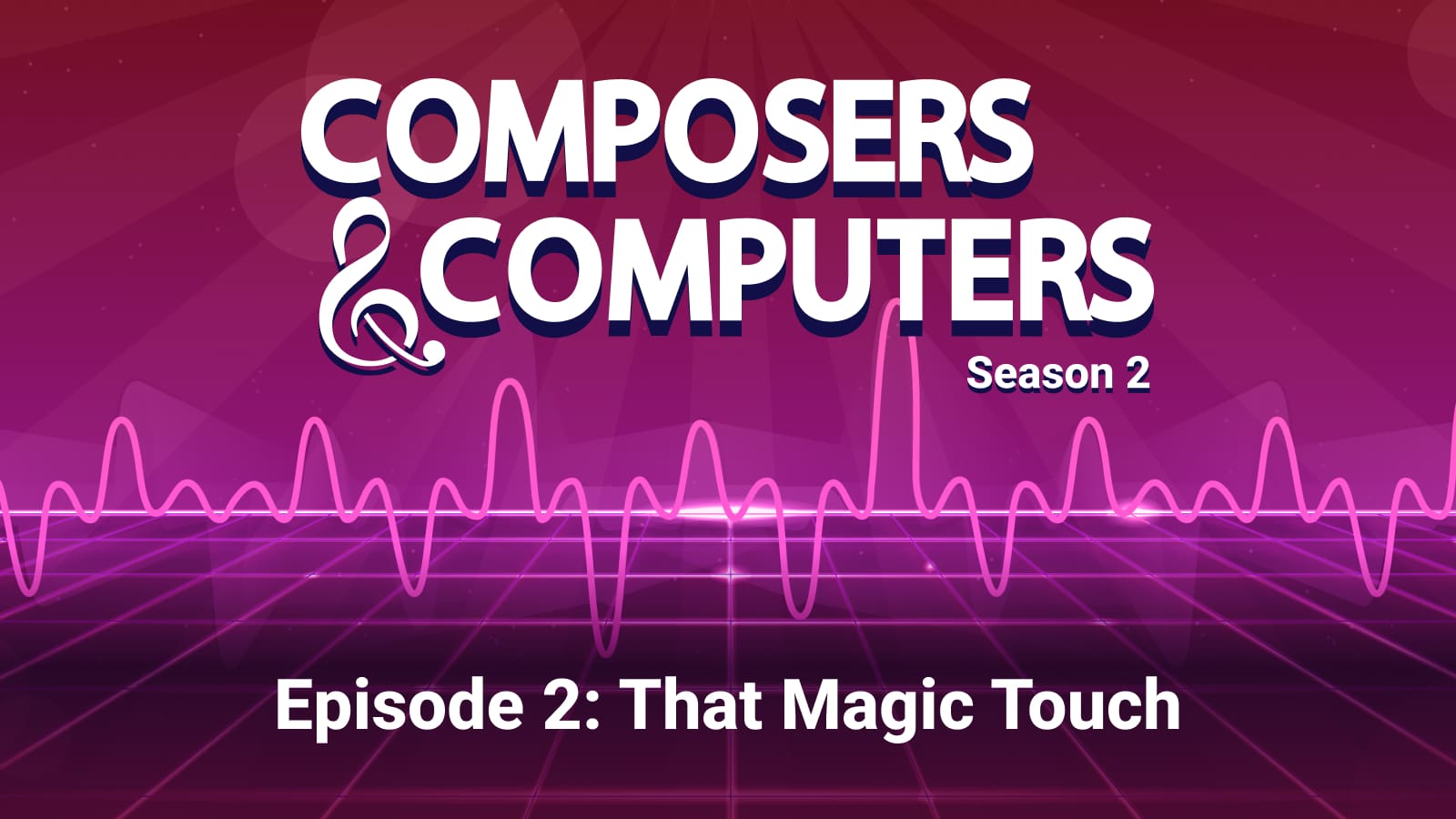
Episode 2: That Magic Touch
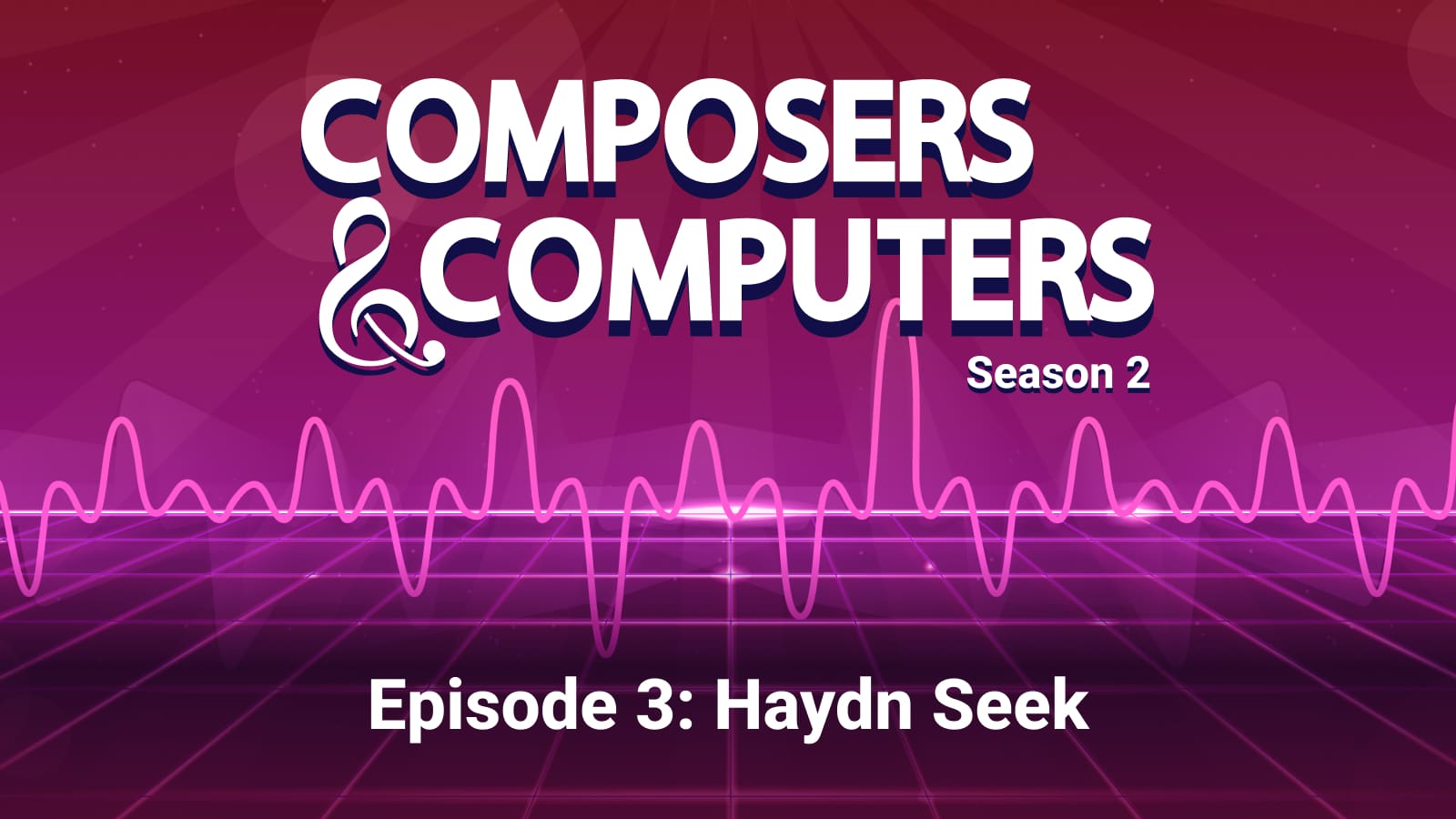
Episode 3: Haydn Seek
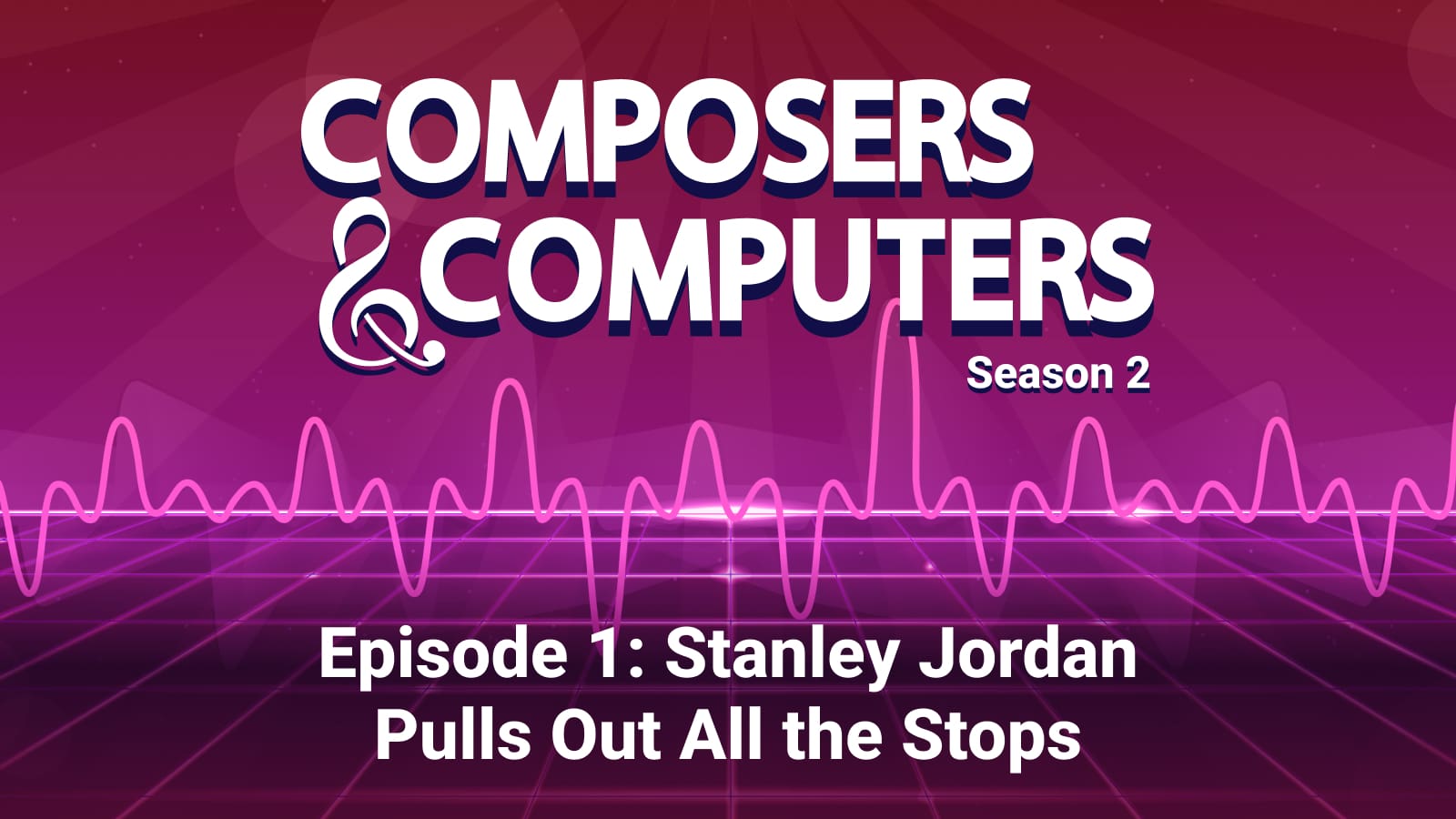
Episode 1: Stanley Jordan Pulls Out All the Stops

Personalizing ChatGPT can make it more offensive, researchers find

Princeton IP Accelerator funding awarded to support promising new technologies

Built for AI, this chip moves beyond transistors for huge computational gains

Mengdi Wang

Bioengineering and Health

Data Science
Related departments and centers.

Electrical and Computer Engineering

Omenn-Darling Bioengineering Institute
Search form
New state of mind: rethinking how researchers understand brain activity.

(© stock.adobe.com)
Understanding the link between brain activity and behavior is among the core interests of neuroscience. Having a better grasp of this relationship will both help scientists understand how the brain works on a basic level and uncover what specifically goes awry in cases of neurological and psychological disease.
One way that researchers study this connection is through what are known as “brain states,” patterns of neural activity or connectivity that emerge during specific cognitive tasks and are common enough in all individuals that they become predictable. Another, newer, approach is the study of brain waves, rhythmic, repetitive patterns of brain cell activity caused by synchronization across cells.
In a new paper, two Yale researchers propose that these two ways of thinking about brain activity may not represent separate events but two aspects of the same occurrence. Essentially, they suggest that though brain states are traditionally thought of as a snapshot of brain activity while waves are more like a movie, they’re capturing parts of the same story.
Reconsidering these two approaches in this context, the researchers say, could help both fields benefit from the methods and knowledge of the other and advance our understanding of the brain.
Inspired by ecological, conservation, and Indigenous philosophies, Maya Foster, a third-year Ph.D. student in the Department of Biomedical Engineering, began pursuing this idea once she joined the lab of Dustin Scheinost , an associate professor in the Department of Radiology and Biomedical Imaging at Yale School of Medicine.
They are co-authors of the new paper , published April 5 in the journal Trends in Cognitive Sciences.
“ We’re arguing that rather than a brain state being one single thing, it’s a collection of things, a collection of discrete patterns that emerge in time in a predictable way,” she said.
In an interview with Yale News, Foster and Scheinost describe their proposal, and discuss how they might help researchers better understand the mysteries of the brain. This interview has been edited and condensed.
When did you start to consider these might be two aspects of the same occurrence?
Maya Foster: This has been on my mind even before I came to this lab. I was reading a book — “Erosion: Essays of Undoing” by Terry Tempest Williams — and she talks about how human-made machinery like helicopters cause vibrations that interrupt the natural pulse of things and cause things like rock formations to fall apart. Relatedly, there are a lot of Indigenous populations that believe everything has a pulse. And that got me thinking of the brain and whether we have some type of resonance or vibration that can be disrupted.
Then I joined this lab and Dustin let me experiment with a lot of different things. During one of those experiments, I input some data into a particular analysis and the outputs looked wave-like, and patterns emerged and then repeated. That took me down a whole rabbit hole of research literature and there was a lot of evidence for this idea of wave-like patterns in brain states.
What are the benefits of considering brain states as wave-like?
Foster: I think it creates a synergy where both sides — the brain state folks and the brain wave folks — benefit by learning from each other. And maybe the gaps in knowledge we have now when it comes to how brain activity relates to behavior might be filled by both groups working together.
Dustin Scheinost: Brain waves are newer in this field and they’re complex. And any time you can take something new and relate it to something old — brain states in this case — it gives you a natural jumping off point. You can bring along everything you’ve learned so far. It’s kind of like not throwing the baby out with the bath water. We don’t need to drop brain states. They’ve informed us, but we can go in a different direction with them too.
How are you proposing researchers consider brain states and brain waves now?
Foster: Borrowing from physics, when you analyze light, it can be a discrete point — a photon — or it can be wave-like. And that’s one way we’re thinking about this. Similarly, depending on how you analyze brain states you can get static patterns, much like a photon, or you if you look at activity more dynamically, certain patterns start to occur more than once over time, kind of like a wave.
So we’re arguing that rather than a brain state being one single thing, it’s a collection of things, a collection of discrete patterns that emerge in time in a predictable way.
For example, if we measured four distinct patterns in brain activity as someone completed a cognitive task, a brain state could be that pattern one emerges, then pattern three, then two, then four, and that series might repeat over time. And when that repetition stops, that would be the end of that particular brain state.
You also draw comparisons to the musical technique known as “fugue.” How does that fit with how you’re visualizing these phenomena?
Foster: I’m a music person, so that’s where this came from. In a fugue, you have a basic melody and then that melody emerges later in the music in different forms and formats. For instance, the melody will play, then some other music comes in, then the melody returns with the same rhythm and time sequence but maybe it’s in a different key.
Fugues are cyclical and wave-like, they have distinct groups of notes, and there’s a systematic repetition and sometimes layering of the main melody. We’re arguing that brain states are also wave-like, have distinct patterns of brain activity, and display systematic repetition and layering of sequential patterns.
How are you hoping other researchers respond to your argument?
Foster: I would love feedback, honestly. There is evidence for what we’re proposing but when it comes to implementing these ideas going forward, it would be helpful to have a conversation about how that might work. There are a lot of different strategies and I’m interested in a broader conversation about how we as researchers might go about studying this.
What’s it like as someone who has been in this field for a while to have a student come in with a new idea like this?
Scheinost: You can get set in your ways as a researcher and you need new ideas, new creativity. Sometimes they may sound outlandish when you first hear them. But then you ruminate, and they start to take form. And it’s fun. That’s really where the fun of this job is, to hear new ideas and see how people discuss and debate them.
Health & Medicine
Media Contact
Fred Mamoun: [email protected] , 203-436-2643

Three promising Yale student scientists named Goldwater Scholars

Celebrating creative innovation at Startup Yale 2024

How to reverse insulin resistance

New Yale certificate program focuses on clean, equitable energy development
- Show More Articles
- Skip to main content
- Keyboard shortcuts for audio player
Research News
- Subscribe to Health Newsletter

Shots - Health News
In the womb, a brother's hormones can shape a sister's future.
April 9, 2024 • When siblings share a womb, sex hormones from a male fetus can cause lasting changes in a female littermate. This effect exists for all kinds of mammals — perhaps humans too.

The black-capped chickadee, seen here, is well known for its strong episodic memory. Dmitriy Aronov hide caption
The "barcodes" powering these tiny songbirds' memories may also help human memory
April 5, 2024 • Tiny, black-capped chickadees have big memories. They stash food in hundreds to thousands of locations in the wild – and then come back to these stashes when other food sources are low. Now, researchers at Columbia University's Zuckerman Institute think neural activity that works like a barcode may be to thank for this impressive feat — and that it might be a clue for how memories work across species.
The "barcodes" powering these tiny songbirds' memories may also help human memory

"One second doesn't sound like much, but in today's interconnected world, getting the time wrong could lead to huge problems," geophysicist Duncan Agnew says. Here, an official clock is seen at a golf tournament in Cape Town, South Africa. Johan Rynners/Getty Images hide caption
Negative leap second: Climate change delays unusual step for time standard
March 30, 2024 • We're nearing a year when a negative leap second could be needed to shave time — an unprecedented step that would have unpredictable effects, a new study says.

A researcher holds up a sandy De Winton's golden mole. Nicky Souness/Endangered Wildlife Trust hide caption
Once lost to science, these "uncharismatic" animals are having their moment
March 29, 2024 • Historic numbers of animals across the globe have become endangered or pushed to extinction. But some of these species sit in limbo — not definitively extinct yet missing from the scientific record. Rediscovering a "lost" species is not easy. It can require trips to remote areas and canvassing a large area in search of only a handful of animals. But new technology and stronger partnerships with local communities have helped these hidden, "uncharismatic" creatures come to light.
Once lost to science, these "uncharismatic" animals are having their moment

The country's two biggest reservoirs are on the Colorado River. Water levels at Lake Powell have dropped steeply during the two-decade megadrought. Justin Sullivan/Getty Images hide caption
The Colorado River rarely reaches the sea. Here's why
March 28, 2024 • More than half of the Colorado River's water is used to grow crops, primarily livestock feed, a new study finds. The river and its users are facing tough decisions as the climate warms.

A post-reproductive toothed whale mother and her son. David Ellifrit/Center for Whale Research hide caption
Most animals don't go through menopause. So why do these whales?
March 22, 2024 • Across the animal kingdom, menopause is something of an evolutionary blip. We humans are one of the few animals to experience it. But Sam Ellis , a researcher in animal behavior, argues that this isn't so surprising. "The best way to propagate your genes is to get as many offspring as possible into the next generation," says Ellis. "The best way to do that is almost always to reproduce your whole life."

A cicada perches on a picnic table in front of Nolde Mansion in Cumru Township, PA in May 2021. New research shows that these insects urinate in a surprising way. Ben Hasty / MediaNews Group/Reading Eagle via Getty Images hide caption
Scientists studied how cicadas pee. Their insights could shed light on fluid dynamics
March 20, 2024 • Cicadas, and the way they urinate, offer a 'perfect' lab for understanding fluid dynamics at very small scales, researchers say

Workers at the U.S. Embassy in Havana leave the building in September 2017. New research out of the National Institutes of Health finds no unusual pattern of damage in the brains of Havana syndrome patients. Emily Michot/Miami Herald/Tribune News Service via Getty Images hide caption
In Havana syndrome patients, NIH scientists find no physical trace of harm
March 18, 2024 • The mysterious ailments that became known as Havana syndrome left no physical evidence of injury or disease, according to two government studies.

This close-up of the Verona astrolabe shows Arabic and Hebrew markings. Federica Gigante hide caption
This medieval astrolabe has both Arabic and Hebrew markings. Here's what it means
March 16, 2024 • This discovery sheds new light on the rich history of scholarship and intellectual exchange between Muslims, Jews and Christians during a time of Muslim rule in medieval Spain.

Flares burn off methane and other hydrocarbons at an oil and gas facility in Lenorah, Texas in 2021. New research shows drillers emit about three times as much climate-warming methane as official estimates. David Goldman/AP hide caption
Oil and gas companies emit more climate-warming methane than EPA reports
March 13, 2024 • Oil and gas drillers are releasing more climate-warming methane than the government estimates, a new study shows.

This type of staghorn coral ( Acropora pulchra ) appeared to benefit from the presence of sea cucumbers ( Holothuria atra ), a new study finds. Terry Moore/Stocktrek Images / Science Source hide caption
This often-overlooked sea creature may be quietly protecting the planet's coral reefs
March 13, 2024 • The pickle-shaped bottom feeders may reduce the amount of microbes on the seafloor that could potentially sicken coral, scientists suggest

Millions of people are affected by long COVID, a disease that encompasses a range of symptoms — everything from brain fog to chronic fatigue — and that manifests differently across patients. The Washington Post/The Washington Post via Getty Images hide caption
What we know about long COVID — from brain fog to physical fatigue
March 13, 2024 • "Long COVID has affected every part of my life," said Virginia resident Rachel Beale said at a recent Senate hearing. "I wake up every day feeling tired, nauseous and dizzy. I immediately start planning when I can lay down again." Beale is far from alone. Many of her experiences have been echoed by others dealing with long COVID. It's a constellation of debilitating symptoms that range from brain fog and intense physical fatigue to depression and anxiety. But there's new, promising research that sheds light onto some symptoms. NPR health correspondent Will Stone talks with Short Wave host Regina G. Barber about the state of long COVID research — what we know, what we don't and when we can expect treatments or even cures for it. Have more COVID questions you want us to cover? Email us at [email protected] — we'd love to hear from you.

Maria E. Garay-Serratos holds a framed photograph of her mother, who died after suffering decades of domestic violence. Scientists are trying to understand how domestic violence damages the brain. Julio Serratos/Maria E. Garay-Serratos hide caption
Domestic violence may leave telltale damage in the brain. Scientists want to find it
March 8, 2024 • Traumatic brain injuries from intimate partner violence are common, and potentially more severe than those seen in sports.

Elephantnose Fish, Gnathonemus petersii, Congo ullstein bild hide caption
The "shocking" tactic electric fish use to collectively sense the world
March 8, 2024 • Neuroscientist Nathan Sawtell has spent a lot of time studying the electric elephantnose fish. These fish send and decipher weak electric signals, which Sawtell hopes will eventually help neuroscientists better understand how the brain filters sensory information about the outside world. As Sawtell has studied these electric critters, he's had a lingering question: why do they always seem to organize themselves in a particular orientation. At first, he couldn't figure out why, but a new study released this week in Nature may have an answer: the fish are creating an electrical network larger than any field a single fish can muster alone, and providing collective knowledge about potential dangers in the surrounding water.
The "shocking" tactic electric fish use to collectively sense the world

A digital illustration of a circle of hands extending from the edge of the image, each holding a sheet of paper. The papers overlap in the center and, like a puzzle, come together to reveal a drawing of a handgun. Oona Tempest/KFF Health News hide caption
Meet the public health researchers trying to rein in America's gun violence crisis
Kff health news.
March 6, 2024 • After the 1996 Dickey Amendment halted federal spending on gun violence research, a small group of academics pressed on, with little money or support. Now a new generation is taking up the charge.

This artist's concept shows the Voyager 1 spacecraft entering the space between stars. Interstellar space is dominated by plasma, ionized gas (illustrated here as brownish haze). NASA/JPL-Caltech hide caption
The Voyager 1 spacecraft has a big glitch. Now, NASA must figure out how to fix it
March 6, 2024 • The Voyager 1 space probe is the farthest human-made object in space. It launched in 1977 with a golden record on board that carried assorted sounds of our home planet: greetings in many different languages, dogs barking, and the sound of two people kissing, to name but a few examples. The idea with this record was that someday, Voyager 1 might be our emissary to alien life – an audible time capsule of Earth's beings. Since its launch, it also managed to complete missions to Jupiter and Saturn. In 2012, it crossed into interstellar space.

A case of bronchitis in 2014 left Sanna Stella, a therapist who lives in the Chicago area, with debilitating fatigue. Stacey Wescott/Tribune News Service via Getty Images hide caption
Clues to a better understanding of chronic fatigue syndrome emerge from a major study
February 23, 2024 • After seven years of research, the findings shed light on the long-neglected illness. Scientists say the results could lead to future trials for potential treatments.

A 3D model of a short section of the stone wall. The scale at the bottom of the image measures 50 cm. Photos by Philipp Hoy, University of Rostock; model created using Agisoft Metashape by J. Auer, LAKD M-V hide caption
Scientists scanning the seafloor discover a long-lost Stone Age 'megastructure'
February 22, 2024 • The more than half mile long wall, called the Blinkerwall, was likely used by Stone Age hunter-gatherers to herd reindeer toward a shooting blind.

The sun emits a mid-level solar flare releasing a burst of solar material. NASA hide caption
In light of the solar maximum, a look at the biggest solar storm in recorded history
February 21, 2024 • We are at the height of the Sun's activity in its eleven year cycle, known to astronomers as the solar maximum. This means that over the next several months there's going to be a lot of solar activity. It's got us thinking back to 1859. That's when astronomer Richard Carrington was studying the Sun when he witnessed the most intense geomagnetic storm recorded in history. The storm, triggered by a giant solar flare, sent brilliant auroral displays across the globe causing electrical sparking and fires in telegraph stations. This encore episode, Regina talks to solar physicist Dr. Samaiyah Farid about what's now known as the Carrington event and about what may happen the next time a massive solar storm hits Earth.

One woolly mammoth's journey at the end of the Ice Age
February 19, 2024 • Lately, paleoecologist Audrey Rowe has been a bit preoccupied with a girl named Elma. That's because Elma is ... a woolly mammoth. And 14,000 years ago, when Elma was alive, her habitat in interior Alaska was rapidly changing. The Ice Age was coming to a close and human hunters were starting early settlements. Which leads to an intriguing question: Who, or what , killed her? In the search for answers, Audrey traces Elma's life and journey through — get this — a single tusk. Today, she shares her insights on what the mammoth extinction from thousands of years ago can teach us about megafauna extinctions today with guest host Nate Rott .

Tai chi has many health benefits. It improves flexibility, reduces stress and can help lower blood pressure. Ruth Jenkinson/Getty Images/Science Photo Library hide caption
Tai chi reduces blood pressure better than aerobic exercise, study finds
February 14, 2024 • The slow-moving Chinese martial art tai chi is known to increase flexibility and balance. Now, research suggests it's more effective at reducing blood pressure than more vigorous forms of exercise.

Manny and Cayenne wrestle and kiss. LA Johnson/NPR hide caption
Manny loves Cayenne. Plus, 5 facts about queer animals for Valentine's Day
February 14, 2024 • In a Valentine's Day exclusive report, NPR has learned there is currently a gay anteater couple at Smithsonian's National Zoo and Conservation Biology Institute in Washington D.C.But this couple is just the tip of the proverbial iceberg when it comes to queerness in the animal world – it's been documented in hundreds of species. We spoke with wildlife ecologist Christine Wilkinson of the "Queer is Natural" TikTok series to uncover the wildest, queerest animals of the bunch.
Editor's Choice: AI Tools to Improve Access to Reliable Health Information
- Viewpoint Including Pregnant and Lactating Women in Clinical Research: Moving Beyond Legal Liability Margaret Foster Riley, JD
Just Published
- Manufacturer Payments to Cardiologists and Use of Devices Sanket S. Dhruva, MD, MHS; et al. Research Letter online first Sanket S. Dhruva, MD, MHS; et al.
- Acetaminophen Use During Pregnancy and Children’s Risk of Autism, ADHD, and Intellectual Disability Viktor H. Ahlqvist, PhD; et al. Original Investigation has active quiz Viktor H. Ahlqvist, PhD; et al.
- Single Ascending and Multiple-Dose Trial of Zerlasiran, a Short Interfering RNA Targeting Lipoprotein(a) Steven E. Nissen, MD; et al. Original Investigation online first Steven E. Nissen, MD; et al.
- Cardiac Function Before Sepsis and Clinical Outcomes Stuthi Iyer, MPH; et al. Research Letter online first Stuthi Iyer, MPH; et al.
- Cancer Stage Compared With Mortality as End Points in Randomized Clinical Trials of Cancer Screening Xiaoshuang Feng, PhD; et al. Original Investigation online first free access Xiaoshuang Feng, PhD; et al. Editorial
- Assessing the Real-World Effectiveness of Immunizations for Respiratory Syncytial Virus Fatimah S. Dawood, MD; et al. Viewpoint online first free access Fatimah S. Dawood, MD; et al.
- Good Enough Lauren Rissman, MD A Piece of My Mind online first free access Lauren Rissman, MD
- Including Pregnant and Lactating Women in Clinical Research Margaret Foster Riley, JD Viewpoint online first free access Margaret Foster Riley, JD
- Trading Places, Becoming One Rafael Campo, MD, MA Editor's Note free access Rafael Campo, MD, MA
- Data Checks Before Registering Study Protocols for Health Care Database Analyses Shirley V. Wang, PhD; et al. Viewpoint online first free access Shirley V. Wang, PhD; et al.
- Tilt Table Testing William P. Cheshire, MD; et al. JAMA Diagnostic Test Interpretation online first has active quiz William P. Cheshire, MD; et al.
- Does This Patient Have Alcohol Use Disorder? Evan Wood, MD, PhD; et al. The Rational Clinical Examination has active quiz Evan Wood, MD, PhD; et al.
- Systemic Lupus Erythematosus Caroline H. Siegel, MD, MS; et al. Review online first has active quiz has multimedia Caroline H. Siegel, MD, MS; et al.
- Risk Assessment and Prevention of Falls in Older Community-Dwelling Adults Cathleen S. Colón-Emeric, MD, MHS; et al. Review online first has active quiz has multimedia Cathleen S. Colón-Emeric, MD, MHS; et al.
- Guidelines on Falls Prevention in Older Adults Peggy B. Leung, MD; et al. JAMA Clinical Guidelines Synopsis online first has active quiz has multimedia Peggy B. Leung, MD; et al.
Latest from the USPSTF
- USPSTF Recommendation: Primary Care Interventions to Prevent Child Maltreatment
- USPSTF Recommendation: Screening for Speech and Language Delay and Disorders
- USPSTF Recommendation: Screening and Preventive Interventions for Oral Health in Adults
- 40,126 Views Brain Waves Appear to Wash Out Waste During Sleep
- 30,084 Views Provision of Medications for Self-Managed Abortion Before and After the Dobbs Decision
- 27,486 Views Effect of Tirzepatide on Maintenance of Weight Reduction
- 26,987 Views Study Provides Insight Into ME/CFS
- 25,392 Views Industry Payments to US Physicians by Specialty and Product Type
- 24,611 Views Pharmacotherapy and Mortality in Individuals With ADHD
- 24,009 Views Prostate-Specific Antigen Screening and 15-Year Prostate Cancer Mortality
- 22,149 Views Questions Surround Blood Tests That Claim to Screen for Multiple Cancers
- 22,106 Views Stroke Risk After COVID-19 Bivalent Vaccination in US Older Adults
- 21,768 Views International Consensus Criteria for Pediatric Sepsis and Septic Shock
- 717 Citations Antibody Response to 2-Dose SARS-CoV-2 mRNA Vaccine Series in Solid Organ Transplant Recipients
- 652 Citations Strengthening the Reporting of Observational Studies in Epidemiology Using Mendelian Randomization
- 609 Citations Pancreatic Cancer
- 598 Citations Updated Guidance on the Reporting of Race and Ethnicity in Medical and Science Journals
- 591 Citations USPSTF Recommendation: Screening for Colorectal Cancer
- 511 Citations Effect of 2 Inactivated SARS-CoV-2 Vaccines on Symptomatic COVID-19 Infection in Adults
- 456 Citations The Leading Causes of Death in the US for 2020
- 444 Citations Effect of Intermediate- vs Standard-Dose Anticoagulation on Outcomes of Patients With COVID-19
- 440 Citations Association Between IL-6 Antagonists and Mortality Among Patients Hospitalized for COVID-19
- 409 Citations Association Between 3 Doses of mRNA COVID-19 Vaccine and Symptomatic Infection Caused by Omicron and Delta Variants
- Register for email alerts with links to free full-text articles
- Access PDFs of free articles
- Manage your interests
- Save searches and receive search alerts
Supported by

Evan Stark, 82, Dies; Broadened Understanding of Domestic Violence
He and his wife wrote pioneering studies; he used the term “coercion control” to describe psychological and physical dominance by abusers.
By Richard Sandomir

She Dreams of Pink Planets and Alien Dinosaurs
Lisa Kaltenegger, director of the Carl Sagan Institute at Cornell University, hunts for aliens in space by studying Earth across time.
By Becky Ferreira

Los anteojos mejoran los ingresos, no solo la vista
Un estudio reveló que cuando un grupo de trabajadores hipermétropes en Bangladés recibían lentes de lectura gratuitos, ganaban un 33 por ciento más que los que no contaban con ellos.
By Andrew Jacobs

Youth Gender Medications Limited in England, Part of Big Shift in Europe
Five European countries have recently restricted hormone treatments for adolescents with gender distress. They have not banned the care, unlike many U.S. states.
By Azeen Ghorayshi

Seriously, Now Is the Time to Stop Kissing Sick Birds
A citizen-science collaboration in New York has turned up a half-dozen birds infected with the avian flu virus.
By Apoorva Mandavilli

New Method That Pinpoints Wood’s Origin May Curb Illegal Timber
The study could help identify wood from Russia, which has been banned by many countries because of the war.
By Alexander Nazaryan

PFAS ‘Forever Chemicals’ Are Pervasive in Water Worldwide, Study Finds
A global survey found harmful levels even in water samples taken far any obvious source of contamination.
By Delger Erdenesanaa

They Came From Outer Space. Now, They’re Going Into Hiding.
Rising temperatures in Antarctica are making meteorites sink out of view before researchers can collect them.
By Katherine Kornei

Large Scientific Review Confirms the Benefits of Physical Touch
Premature babies especially benefited from skin-to-skin contact, and women tended to respond more strongly than men did.
By Joanne Silberner

See the Total Solar Eclipse’s Shadow From Space
An American weather satellite is capturing the movement of the moon’s shadow across North America during the total eclipse of the sun on Monday.
By K.K. Rebecca Lai and William B. Davis
Advertisement
share this!
April 3, 2024
This article has been reviewed according to Science X's editorial process and policies . Editors have highlighted the following attributes while ensuring the content's credibility:
fact-checked
trusted source
A periodic table of primes: Research team claims that prime numbers can be predicted
by Michael Gibb, City University of Hong Kong

Both arithmetic aficionados and the mathematically challenged will be equally captivated by new research that upends hundreds of years of popular belief about prime numbers.
Contrary to what just about every mathematician on Earth will tell you, prime numbers can be predicted, according to researchers at City University of Hong Kong (CityUHK) and North Carolina State University, U.S.
The research team comprises Han-Lin Li, Shu-Cherng Fang, and Way Kuo. Fang is the Walter Clark Chair Professor of Industrial and Systems Engineering at North Carolina State University. Kuo is a Senior Fellow at the Hong Kong Institute for Advanced Study, CityU.
This is a genuinely revolutionary development in prime number theory, says Way Kuo, who is working on the project alongside researchers from the U.S. The team leader is Han-Lin Li, a Visiting Professor in the Department of Computer Science at CityUHK.
We have known for millennia that an infinite number of prime numbers, i.e., 2, 3, 5, 7, 11, etc., can be divided by themselves and the number 1 only. But until now, we have not been able to predict where the next prime will pop up in a sequence of numbers. In fact, mathematicians have generally agreed that prime numbers are like weeds: they seem just to shoot out randomly.
"But our team has devised a way to predict accurately and swiftly when prime numbers will appear," adds Kuo.
The technical aspects of the research are daunting for all but a handful of mathematicians worldwide. In a nutshell, the outcome of the team's research is a handy periodic table of primes, or the PTP, pointing the locations of prime numbers. The research is available as a working paper in the SSRN Electronic Journal .
The PTP can be used to shed light on finding a future prime, factoring an integer, visualizing an integer and its factors, identifying locations of twin primes, predicting the total number of primes and twin primes or estimating the maximum prime gap within an interval, among others.
More to the point, the PTP has major applications today in areas such as cyber security. Primes are already a fundamental part of encryption and cryptography, so this breakthrough means data can be made much more secure if we can predict prime numbers, Kuo explains.
This advance in prime number research stemmed from working on systems reliability design and a color coding system that uses prime numbers to enable efficient encoding and more effective color compression. During their research, the team discovered that their calculations could be used to predict prime numbers .
Provided by City University of Hong Kong
Explore further
Feedback to editors

New study finds potential targets at chromosome ends for degenerative disease prevention
33 minutes ago

Scientists discover first nitrogen-fixing organelle
34 minutes ago

Traces of DNA in the stomachs of predatory snails provide new insights into the ecology of placozoans
41 minutes ago

New study reveals novel approach for combating 'resting' bacteria
57 minutes ago

Researchers develop method to extract useful proteins from beer-brewing leftovers

Scientists find blue light makes buildings more deadly to migrating birds
2 hours ago

Ant pheromones may help protect hikers and campers from ticks

Trapped in the middle: Billiards with memory framework leads to mathematical questions

What do bird dreams sound like?

Scientists develop biofortified rice to combat nutrient deficiencies
Relevant physicsforums posts, part to whole comparison, how to pick some numbers out of 13 integers, by a 4 digits code.
Apr 10, 2024
Calculating the inverse of a function involving the error function
Apr 5, 2024
Reprise: Calculate the distance between two points without using a coordinate system
Apr 4, 2024
Non-sinusoidal waveform model
Apr 3, 2024
I've been trying to understand the proof for the binomial theorem
More from General Math
Related Stories

Why prime numbers still fascinate mathematicians, 2,300 years later
Apr 3, 2018

A newly discovered prime number makes its debut
Jan 31, 2018

Why do we need to know about prime numbers with millions of digits?
Jan 12, 2018

GIMPS project discovers largest known prime number
Jan 4, 2018

Quantum simulator offers faster route for prime factorization
Apr 10, 2018


Surprising hidden order unites prime numbers and crystal-like materials
Sep 6, 2018
Recommended for you

'I had such fun!', says winner of top math prize
Mar 20, 2024

Ice-ray patterns: A rediscovery of past design for the future

Paper offers a mathematical approach to modeling a random walker moving across a random landscape
Mar 13, 2024

How do neural networks learn? A mathematical formula explains how they detect relevant patterns
Mar 12, 2024

Mathematicians prove Pólya's conjecture for the eigenvalues of a disk, a 70-year-old math problem
Mar 1, 2024

Pythagoras was wrong: There are no universal musical harmonies, study finds
Feb 27, 2024
Let us know if there is a problem with our content
Use this form if you have come across a typo, inaccuracy or would like to send an edit request for the content on this page. For general inquiries, please use our contact form . For general feedback, use the public comments section below (please adhere to guidelines ).
Please select the most appropriate category to facilitate processing of your request
Thank you for taking time to provide your feedback to the editors.
Your feedback is important to us. However, we do not guarantee individual replies due to the high volume of messages.
E-mail the story
Your email address is used only to let the recipient know who sent the email. Neither your address nor the recipient's address will be used for any other purpose. The information you enter will appear in your e-mail message and is not retained by Phys.org in any form.
Newsletter sign up
Get weekly and/or daily updates delivered to your inbox. You can unsubscribe at any time and we'll never share your details to third parties.
More information Privacy policy
Donate and enjoy an ad-free experience
We keep our content available to everyone. Consider supporting Science X's mission by getting a premium account.
E-mail newsletter
An official website of the United States government
The .gov means it’s official. Federal government websites often end in .gov or .mil. Before sharing sensitive information, make sure you’re on a federal government site.
The site is secure. The https:// ensures that you are connecting to the official website and that any information you provide is encrypted and transmitted securely.
- Publications
- Account settings
Preview improvements coming to the PMC website in October 2024. Learn More or Try it out now .
- Advanced Search
- Journal List
- v.12(6); 2020 Jun

Social Media Use and Its Connection to Mental Health: A Systematic Review
Fazida karim.
1 Psychology, California Institute of Behavioral Neurosciences and Psychology, Fairfield, USA
2 Business & Management, University Sultan Zainal Abidin, Terengganu, MYS
Azeezat A Oyewande
3 Family Medicine, California Institute of Behavioral Neurosciences and Psychology, Fairfield, USA
4 Family Medicine, Lagos State Health Service Commission/Alimosho General Hospital, Lagos, NGA
Lamis F Abdalla
5 Internal Medicine, California Institute of Behavioral Neurosciences and Psychology, Fairfield, USA
Reem Chaudhry Ehsanullah
Safeera khan.
Social media are responsible for aggravating mental health problems. This systematic study summarizes the effects of social network usage on mental health. Fifty papers were shortlisted from google scholar databases, and after the application of various inclusion and exclusion criteria, 16 papers were chosen and all papers were evaluated for quality. Eight papers were cross-sectional studies, three were longitudinal studies, two were qualitative studies, and others were systematic reviews. Findings were classified into two outcomes of mental health: anxiety and depression. Social media activity such as time spent to have a positive effect on the mental health domain. However, due to the cross-sectional design and methodological limitations of sampling, there are considerable differences. The structure of social media influences on mental health needs to be further analyzed through qualitative research and vertical cohort studies.
Introduction and background
Human beings are social creatures that require the companionship of others to make progress in life. Thus, being socially connected with other people can relieve stress, anxiety, and sadness, but lack of social connection can pose serious risks to mental health [ 1 ].
Social media
Social media has recently become part of people's daily activities; many of them spend hours each day on Messenger, Instagram, Facebook, and other popular social media. Thus, many researchers and scholars study the impact of social media and applications on various aspects of people’s lives [ 2 ]. Moreover, the number of social media users worldwide in 2019 is 3.484 billion, up 9% year-on-year [ 3 - 5 ]. A statistic in Figure 1 shows the gender distribution of social media audiences worldwide as of January 2020, sorted by platform. It was found that only 38% of Twitter users were male but 61% were using Snapchat. In contrast, females were more likely to use LinkedIn and Facebook. There is no denying that social media has now become an important part of many people's lives. Social media has many positive and enjoyable benefits, but it can also lead to mental health problems. Previous research found that age did not have an effect but gender did; females were much more likely to experience mental health than males [ 6 , 7 ].

Impact on mental health
Mental health is defined as a state of well-being in which people understand their abilities, solve everyday life problems, work well, and make a significant contribution to the lives of their communities [ 8 ]. There is debated presently going on regarding the benefits and negative impacts of social media on mental health [ 9 , 10 ]. Social networking is a crucial element in protecting our mental health. Both the quantity and quality of social relationships affect mental health, health behavior, physical health, and mortality risk [ 9 ]. The Displaced Behavior Theory may help explain why social media shows a connection with mental health. According to the theory, people who spend more time in sedentary behaviors such as social media use have less time for face-to-face social interaction, both of which have been proven to be protective against mental disorders [ 11 , 12 ]. On the other hand, social theories found how social media use affects mental health by influencing how people view, maintain, and interact with their social network [ 13 ]. A number of studies have been conducted on the impacts of social media, and it has been indicated that the prolonged use of social media platforms such as Facebook may be related to negative signs and symptoms of depression, anxiety, and stress [ 10 - 15 ]. Furthermore, social media can create a lot of pressure to create the stereotype that others want to see and also being as popular as others.
The need for a systematic review
Systematic studies can quantitatively and qualitatively identify, aggregate, and evaluate all accessible data to generate a warm and accurate response to the research questions involved [ 4 ]. In addition, many existing systematic studies related to mental health studies have been conducted worldwide. However, only a limited number of studies are integrated with social media and conducted in the context of social science because the available literature heavily focused on medical science [ 6 ]. Because social media is a relatively new phenomenon, the potential links between their use and mental health have not been widely investigated.
This paper attempt to systematically review all the relevant literature with the aim of filling the gap by examining social media impact on mental health, which is sedentary behavior, which, if in excess, raises the risk of health problems [ 7 , 9 , 12 ]. This study is important because it provides information on the extent of the focus of peer review literature, which can assist the researchers in delivering a prospect with the aim of understanding the future attention related to climate change strategies that require scholarly attention. This study is very useful because it provides information on the extent to which peer review literature can assist researchers in presenting prospects with a view to understanding future concerns related to mental health strategies that require scientific attention. The development of the current systematic review is based on the main research question: how does social media affect mental health?
Research strategy
The research was conducted to identify studies analyzing the role of social media on mental health. Google Scholar was used as our main database to find the relevant articles. Keywords that were used for the search were: (1) “social media”, (2) “mental health”, (3) “social media” AND “mental health”, (4) “social networking” AND “mental health”, and (5) “social networking” OR “social media” AND “mental health” (Table 1 ).
Out of the results in Table 1 , a total of 50 articles relevant to the research question were selected. After applying the inclusion and exclusion criteria, duplicate papers were removed, and, finally, a total of 28 articles were selected for review (Figure 2 ).

PRISMA, Preferred Reporting Items for Systematic Reviews and Meta-Analyses
Inclusion and exclusion criteria
Peer-reviewed, full-text research papers from the past five years were included in the review. All selected articles were in English language and any non-peer-reviewed and duplicate papers were excluded from finally selected articles.
Of the 16 selected research papers, there were a research focus on adults, gender, and preadolescents [ 10 - 19 ]. In the design, there were qualitative and quantitative studies [ 15 , 16 ]. There were three systematic reviews and one thematic analysis that explored the better or worse of using social media among adolescents [ 20 - 23 ]. In addition, eight were cross-sectional studies and only three were longitudinal studies [ 24 - 29 ].The meta-analyses included studies published beyond the last five years in this population. Table 2 presents a selection of studies from the review.
IGU, internet gaming disorder; PSMU, problematic social media use
This study has attempted to systematically analyze the existing literature on the effect of social media use on mental health. Although the results of the study were not completely consistent, this review found a general association between social media use and mental health issues. Although there is positive evidence for a link between social media and mental health, the opposite has been reported.
For example, a previous study found no relationship between the amount of time spent on social media and depression or between social media-related activities, such as the number of online friends and the number of “selfies”, and depression [ 29 ]. Similarly, Neira and Barber found that while higher investment in social media (e.g. active social media use) predicted adolescents’ depressive symptoms, no relationship was found between the frequency of social media use and depressed mood [ 28 ].
In the 16 studies, anxiety and depression were the most commonly measured outcome. The prominent risk factors for anxiety and depression emerging from this study comprised time spent, activity, and addiction to social media. In today's world, anxiety is one of the basic mental health problems. People liked and commented on their uploaded photos and videos. In today's age, everyone is immune to the social media context. Some teens experience anxiety from social media related to fear of loss, which causes teens to try to respond and check all their friends' messages and messages on a regular basis.
On the contrary, depression is one of the unintended significances of unnecessary use of social media. In detail, depression is limited not only to Facebooks but also to other social networking sites, which causes psychological problems. A new study found that individuals who are involved in social media, games, texts, mobile phones, etc. are more likely to experience depression.
The previous study found a 70% increase in self-reported depressive symptoms among the group using social media. The other social media influence that causes depression is sexual fun [ 12 ]. The intimacy fun happens when social media promotes putting on a facade that highlights the fun and excitement but does not tell us much about where we are struggling in our daily lives at a deeper level [ 28 ]. Another study revealed that depression and time spent on Facebook by adolescents are positively correlated [ 22 ]. More importantly, symptoms of major depression have been found among the individuals who spent most of their time in online activities and performing image management on social networking sites [ 14 ].
Another study assessed gender differences in associations between social media use and mental health. Females were found to be more addicted to social media as compared with males [ 26 ]. Passive activity in social media use such as reading posts is more strongly associated with depression than doing active use like making posts [ 23 ]. Other important findings of this review suggest that other factors such as interpersonal trust and family functioning may have a greater influence on the symptoms of depression than the frequency of social media use [ 28 , 29 ].
Limitation and suggestion
The limitations and suggestions were identified by the evidence involved in the study and review process. Previously, 7 of the 16 studies were cross-sectional and slightly failed to determine the causal relationship between the variables of interest. Given the evidence from cross-sectional studies, it is not possible to conclude that the use of social networks causes mental health problems. Only three longitudinal studies examined the causal relationship between social media and mental health, which is hard to examine if the mental health problem appeared more pronounced in those who use social media more compared with those who use it less or do not use at all [ 19 , 20 , 24 ]. Next, despite the fact that the proposed relationship between social media and mental health is complex, a few studies investigated mediating factors that may contribute or exacerbate this relationship. Further investigations are required to clarify the underlying factors that help examine why social media has a negative impact on some peoples’ mental health, whereas it has no or positive effect on others’ mental health.
Conclusions
Social media is a new study that is rapidly growing and gaining popularity. Thus, there are many unexplored and unexpected constructive answers associated with it. Lately, studies have found that using social media platforms can have a detrimental effect on the psychological health of its users. However, the extent to which the use of social media impacts the public is yet to be determined. This systematic review has found that social media envy can affect the level of anxiety and depression in individuals. In addition, other potential causes of anxiety and depression have been identified, which require further exploration.
The importance of such findings is to facilitate further research on social media and mental health. In addition, the information obtained from this study can be helpful not only to medical professionals but also to social science research. The findings of this study suggest that potential causal factors from social media can be considered when cooperating with patients who have been diagnosed with anxiety or depression. Also, if the results from this study were used to explore more relationships with another construct, this could potentially enhance the findings to reduce anxiety and depression rates and prevent suicide rates from occurring.
The content published in Cureus is the result of clinical experience and/or research by independent individuals or organizations. Cureus is not responsible for the scientific accuracy or reliability of data or conclusions published herein. All content published within Cureus is intended only for educational, research and reference purposes. Additionally, articles published within Cureus should not be deemed a suitable substitute for the advice of a qualified health care professional. Do not disregard or avoid professional medical advice due to content published within Cureus.
The authors have declared that no competing interests exist.
1 in 5 U.S. Cancer Patients Join in Medical Research
HealthDay April 3, 2024
CDC: Tuberculosis Cases Increasing
While the U.S. has one of the lowest rates of tuberculosis in the world, researchers found that cases increased 16% from 2022 to 2023.
Cecelia Smith-Schoenwalder March 28, 2024

Researchers Find New Way to Curb Asthma Attacks
HealthDay March 26, 2024
Biden to Sign Order Expanding Health Research in Women
HealthDay March 18, 2024
Politics Hasn't Shaken Most Americans' Faith in Science: Study
HealthDay March 12, 2024
Jill Biden Announces $100 Million for Research on Women's Health
HealthDay Feb. 22, 2024
Study Links Living Alone to Depression
New research bound to influence conversations about America’s ‘loneliness epidemic’ suggests living alone could have implications for physical and mental health.
Steven Ross Johnson Feb. 15, 2024

Scientists Discover New Way to Fight Estrogen-Fueled Breast Cancer
HealthDay Feb. 14, 2024
Food Insecurity Tied to Early Death
An inability to get adequate food is shaving years off people’s lives in the U.S., a new study suggests.
Steven Ross Johnson Jan. 29, 2024

Dana Farber Cancer Center to Retract or Fix Dozens of Studies
HealthDay Jan. 23, 2024
America 2024

- Privacy Policy
Buy Me a Coffee

Home » Research Paper – Structure, Examples and Writing Guide
Research Paper – Structure, Examples and Writing Guide
Table of Contents

Research Paper
Definition:
Research Paper is a written document that presents the author’s original research, analysis, and interpretation of a specific topic or issue.
It is typically based on Empirical Evidence, and may involve qualitative or quantitative research methods, or a combination of both. The purpose of a research paper is to contribute new knowledge or insights to a particular field of study, and to demonstrate the author’s understanding of the existing literature and theories related to the topic.
Structure of Research Paper
The structure of a research paper typically follows a standard format, consisting of several sections that convey specific information about the research study. The following is a detailed explanation of the structure of a research paper:
The title page contains the title of the paper, the name(s) of the author(s), and the affiliation(s) of the author(s). It also includes the date of submission and possibly, the name of the journal or conference where the paper is to be published.
The abstract is a brief summary of the research paper, typically ranging from 100 to 250 words. It should include the research question, the methods used, the key findings, and the implications of the results. The abstract should be written in a concise and clear manner to allow readers to quickly grasp the essence of the research.
Introduction
The introduction section of a research paper provides background information about the research problem, the research question, and the research objectives. It also outlines the significance of the research, the research gap that it aims to fill, and the approach taken to address the research question. Finally, the introduction section ends with a clear statement of the research hypothesis or research question.
Literature Review
The literature review section of a research paper provides an overview of the existing literature on the topic of study. It includes a critical analysis and synthesis of the literature, highlighting the key concepts, themes, and debates. The literature review should also demonstrate the research gap and how the current study seeks to address it.
The methods section of a research paper describes the research design, the sample selection, the data collection and analysis procedures, and the statistical methods used to analyze the data. This section should provide sufficient detail for other researchers to replicate the study.
The results section presents the findings of the research, using tables, graphs, and figures to illustrate the data. The findings should be presented in a clear and concise manner, with reference to the research question and hypothesis.
The discussion section of a research paper interprets the findings and discusses their implications for the research question, the literature review, and the field of study. It should also address the limitations of the study and suggest future research directions.
The conclusion section summarizes the main findings of the study, restates the research question and hypothesis, and provides a final reflection on the significance of the research.
The references section provides a list of all the sources cited in the paper, following a specific citation style such as APA, MLA or Chicago.
How to Write Research Paper
You can write Research Paper by the following guide:
- Choose a Topic: The first step is to select a topic that interests you and is relevant to your field of study. Brainstorm ideas and narrow down to a research question that is specific and researchable.
- Conduct a Literature Review: The literature review helps you identify the gap in the existing research and provides a basis for your research question. It also helps you to develop a theoretical framework and research hypothesis.
- Develop a Thesis Statement : The thesis statement is the main argument of your research paper. It should be clear, concise and specific to your research question.
- Plan your Research: Develop a research plan that outlines the methods, data sources, and data analysis procedures. This will help you to collect and analyze data effectively.
- Collect and Analyze Data: Collect data using various methods such as surveys, interviews, observations, or experiments. Analyze data using statistical tools or other qualitative methods.
- Organize your Paper : Organize your paper into sections such as Introduction, Literature Review, Methods, Results, Discussion, and Conclusion. Ensure that each section is coherent and follows a logical flow.
- Write your Paper : Start by writing the introduction, followed by the literature review, methods, results, discussion, and conclusion. Ensure that your writing is clear, concise, and follows the required formatting and citation styles.
- Edit and Proofread your Paper: Review your paper for grammar and spelling errors, and ensure that it is well-structured and easy to read. Ask someone else to review your paper to get feedback and suggestions for improvement.
- Cite your Sources: Ensure that you properly cite all sources used in your research paper. This is essential for giving credit to the original authors and avoiding plagiarism.
Research Paper Example
Note : The below example research paper is for illustrative purposes only and is not an actual research paper. Actual research papers may have different structures, contents, and formats depending on the field of study, research question, data collection and analysis methods, and other factors. Students should always consult with their professors or supervisors for specific guidelines and expectations for their research papers.
Research Paper Example sample for Students:
Title: The Impact of Social Media on Mental Health among Young Adults
Abstract: This study aims to investigate the impact of social media use on the mental health of young adults. A literature review was conducted to examine the existing research on the topic. A survey was then administered to 200 university students to collect data on their social media use, mental health status, and perceived impact of social media on their mental health. The results showed that social media use is positively associated with depression, anxiety, and stress. The study also found that social comparison, cyberbullying, and FOMO (Fear of Missing Out) are significant predictors of mental health problems among young adults.
Introduction: Social media has become an integral part of modern life, particularly among young adults. While social media has many benefits, including increased communication and social connectivity, it has also been associated with negative outcomes, such as addiction, cyberbullying, and mental health problems. This study aims to investigate the impact of social media use on the mental health of young adults.
Literature Review: The literature review highlights the existing research on the impact of social media use on mental health. The review shows that social media use is associated with depression, anxiety, stress, and other mental health problems. The review also identifies the factors that contribute to the negative impact of social media, including social comparison, cyberbullying, and FOMO.
Methods : A survey was administered to 200 university students to collect data on their social media use, mental health status, and perceived impact of social media on their mental health. The survey included questions on social media use, mental health status (measured using the DASS-21), and perceived impact of social media on their mental health. Data were analyzed using descriptive statistics and regression analysis.
Results : The results showed that social media use is positively associated with depression, anxiety, and stress. The study also found that social comparison, cyberbullying, and FOMO are significant predictors of mental health problems among young adults.
Discussion : The study’s findings suggest that social media use has a negative impact on the mental health of young adults. The study highlights the need for interventions that address the factors contributing to the negative impact of social media, such as social comparison, cyberbullying, and FOMO.
Conclusion : In conclusion, social media use has a significant impact on the mental health of young adults. The study’s findings underscore the need for interventions that promote healthy social media use and address the negative outcomes associated with social media use. Future research can explore the effectiveness of interventions aimed at reducing the negative impact of social media on mental health. Additionally, longitudinal studies can investigate the long-term effects of social media use on mental health.
Limitations : The study has some limitations, including the use of self-report measures and a cross-sectional design. The use of self-report measures may result in biased responses, and a cross-sectional design limits the ability to establish causality.
Implications: The study’s findings have implications for mental health professionals, educators, and policymakers. Mental health professionals can use the findings to develop interventions that address the negative impact of social media use on mental health. Educators can incorporate social media literacy into their curriculum to promote healthy social media use among young adults. Policymakers can use the findings to develop policies that protect young adults from the negative outcomes associated with social media use.
References :
- Twenge, J. M., & Campbell, W. K. (2019). Associations between screen time and lower psychological well-being among children and adolescents: Evidence from a population-based study. Preventive medicine reports, 15, 100918.
- Primack, B. A., Shensa, A., Escobar-Viera, C. G., Barrett, E. L., Sidani, J. E., Colditz, J. B., … & James, A. E. (2017). Use of multiple social media platforms and symptoms of depression and anxiety: A nationally-representative study among US young adults. Computers in Human Behavior, 69, 1-9.
- Van der Meer, T. G., & Verhoeven, J. W. (2017). Social media and its impact on academic performance of students. Journal of Information Technology Education: Research, 16, 383-398.
Appendix : The survey used in this study is provided below.
Social Media and Mental Health Survey
- How often do you use social media per day?
- Less than 30 minutes
- 30 minutes to 1 hour
- 1 to 2 hours
- 2 to 4 hours
- More than 4 hours
- Which social media platforms do you use?
- Others (Please specify)
- How often do you experience the following on social media?
- Social comparison (comparing yourself to others)
- Cyberbullying
- Fear of Missing Out (FOMO)
- Have you ever experienced any of the following mental health problems in the past month?
- Do you think social media use has a positive or negative impact on your mental health?
- Very positive
- Somewhat positive
- Somewhat negative
- Very negative
- In your opinion, which factors contribute to the negative impact of social media on mental health?
- Social comparison
- In your opinion, what interventions could be effective in reducing the negative impact of social media on mental health?
- Education on healthy social media use
- Counseling for mental health problems caused by social media
- Social media detox programs
- Regulation of social media use
Thank you for your participation!
Applications of Research Paper
Research papers have several applications in various fields, including:
- Advancing knowledge: Research papers contribute to the advancement of knowledge by generating new insights, theories, and findings that can inform future research and practice. They help to answer important questions, clarify existing knowledge, and identify areas that require further investigation.
- Informing policy: Research papers can inform policy decisions by providing evidence-based recommendations for policymakers. They can help to identify gaps in current policies, evaluate the effectiveness of interventions, and inform the development of new policies and regulations.
- Improving practice: Research papers can improve practice by providing evidence-based guidance for professionals in various fields, including medicine, education, business, and psychology. They can inform the development of best practices, guidelines, and standards of care that can improve outcomes for individuals and organizations.
- Educating students : Research papers are often used as teaching tools in universities and colleges to educate students about research methods, data analysis, and academic writing. They help students to develop critical thinking skills, research skills, and communication skills that are essential for success in many careers.
- Fostering collaboration: Research papers can foster collaboration among researchers, practitioners, and policymakers by providing a platform for sharing knowledge and ideas. They can facilitate interdisciplinary collaborations and partnerships that can lead to innovative solutions to complex problems.
When to Write Research Paper
Research papers are typically written when a person has completed a research project or when they have conducted a study and have obtained data or findings that they want to share with the academic or professional community. Research papers are usually written in academic settings, such as universities, but they can also be written in professional settings, such as research organizations, government agencies, or private companies.
Here are some common situations where a person might need to write a research paper:
- For academic purposes: Students in universities and colleges are often required to write research papers as part of their coursework, particularly in the social sciences, natural sciences, and humanities. Writing research papers helps students to develop research skills, critical thinking skills, and academic writing skills.
- For publication: Researchers often write research papers to publish their findings in academic journals or to present their work at academic conferences. Publishing research papers is an important way to disseminate research findings to the academic community and to establish oneself as an expert in a particular field.
- To inform policy or practice : Researchers may write research papers to inform policy decisions or to improve practice in various fields. Research findings can be used to inform the development of policies, guidelines, and best practices that can improve outcomes for individuals and organizations.
- To share new insights or ideas: Researchers may write research papers to share new insights or ideas with the academic or professional community. They may present new theories, propose new research methods, or challenge existing paradigms in their field.
Purpose of Research Paper
The purpose of a research paper is to present the results of a study or investigation in a clear, concise, and structured manner. Research papers are written to communicate new knowledge, ideas, or findings to a specific audience, such as researchers, scholars, practitioners, or policymakers. The primary purposes of a research paper are:
- To contribute to the body of knowledge : Research papers aim to add new knowledge or insights to a particular field or discipline. They do this by reporting the results of empirical studies, reviewing and synthesizing existing literature, proposing new theories, or providing new perspectives on a topic.
- To inform or persuade: Research papers are written to inform or persuade the reader about a particular issue, topic, or phenomenon. They present evidence and arguments to support their claims and seek to persuade the reader of the validity of their findings or recommendations.
- To advance the field: Research papers seek to advance the field or discipline by identifying gaps in knowledge, proposing new research questions or approaches, or challenging existing assumptions or paradigms. They aim to contribute to ongoing debates and discussions within a field and to stimulate further research and inquiry.
- To demonstrate research skills: Research papers demonstrate the author’s research skills, including their ability to design and conduct a study, collect and analyze data, and interpret and communicate findings. They also demonstrate the author’s ability to critically evaluate existing literature, synthesize information from multiple sources, and write in a clear and structured manner.
Characteristics of Research Paper
Research papers have several characteristics that distinguish them from other forms of academic or professional writing. Here are some common characteristics of research papers:
- Evidence-based: Research papers are based on empirical evidence, which is collected through rigorous research methods such as experiments, surveys, observations, or interviews. They rely on objective data and facts to support their claims and conclusions.
- Structured and organized: Research papers have a clear and logical structure, with sections such as introduction, literature review, methods, results, discussion, and conclusion. They are organized in a way that helps the reader to follow the argument and understand the findings.
- Formal and objective: Research papers are written in a formal and objective tone, with an emphasis on clarity, precision, and accuracy. They avoid subjective language or personal opinions and instead rely on objective data and analysis to support their arguments.
- Citations and references: Research papers include citations and references to acknowledge the sources of information and ideas used in the paper. They use a specific citation style, such as APA, MLA, or Chicago, to ensure consistency and accuracy.
- Peer-reviewed: Research papers are often peer-reviewed, which means they are evaluated by other experts in the field before they are published. Peer-review ensures that the research is of high quality, meets ethical standards, and contributes to the advancement of knowledge in the field.
- Objective and unbiased: Research papers strive to be objective and unbiased in their presentation of the findings. They avoid personal biases or preconceptions and instead rely on the data and analysis to draw conclusions.
Advantages of Research Paper
Research papers have many advantages, both for the individual researcher and for the broader academic and professional community. Here are some advantages of research papers:
- Contribution to knowledge: Research papers contribute to the body of knowledge in a particular field or discipline. They add new information, insights, and perspectives to existing literature and help advance the understanding of a particular phenomenon or issue.
- Opportunity for intellectual growth: Research papers provide an opportunity for intellectual growth for the researcher. They require critical thinking, problem-solving, and creativity, which can help develop the researcher’s skills and knowledge.
- Career advancement: Research papers can help advance the researcher’s career by demonstrating their expertise and contributions to the field. They can also lead to new research opportunities, collaborations, and funding.
- Academic recognition: Research papers can lead to academic recognition in the form of awards, grants, or invitations to speak at conferences or events. They can also contribute to the researcher’s reputation and standing in the field.
- Impact on policy and practice: Research papers can have a significant impact on policy and practice. They can inform policy decisions, guide practice, and lead to changes in laws, regulations, or procedures.
- Advancement of society: Research papers can contribute to the advancement of society by addressing important issues, identifying solutions to problems, and promoting social justice and equality.
Limitations of Research Paper
Research papers also have some limitations that should be considered when interpreting their findings or implications. Here are some common limitations of research papers:
- Limited generalizability: Research findings may not be generalizable to other populations, settings, or contexts. Studies often use specific samples or conditions that may not reflect the broader population or real-world situations.
- Potential for bias : Research papers may be biased due to factors such as sample selection, measurement errors, or researcher biases. It is important to evaluate the quality of the research design and methods used to ensure that the findings are valid and reliable.
- Ethical concerns: Research papers may raise ethical concerns, such as the use of vulnerable populations or invasive procedures. Researchers must adhere to ethical guidelines and obtain informed consent from participants to ensure that the research is conducted in a responsible and respectful manner.
- Limitations of methodology: Research papers may be limited by the methodology used to collect and analyze data. For example, certain research methods may not capture the complexity or nuance of a particular phenomenon, or may not be appropriate for certain research questions.
- Publication bias: Research papers may be subject to publication bias, where positive or significant findings are more likely to be published than negative or non-significant findings. This can skew the overall findings of a particular area of research.
- Time and resource constraints: Research papers may be limited by time and resource constraints, which can affect the quality and scope of the research. Researchers may not have access to certain data or resources, or may be unable to conduct long-term studies due to practical limitations.
About the author
Muhammad Hassan
Researcher, Academic Writer, Web developer
You may also like

How to Cite Research Paper – All Formats and...

Data Collection – Methods Types and Examples

Delimitations in Research – Types, Examples and...

Research Paper Format – Types, Examples and...

Research Process – Steps, Examples and Tips

Research Design – Types, Methods and Examples
Thank you for visiting nature.com. You are using a browser version with limited support for CSS. To obtain the best experience, we recommend you use a more up to date browser (or turn off compatibility mode in Internet Explorer). In the meantime, to ensure continued support, we are displaying the site without styles and JavaScript.
- View all journals
Neurology articles from across Nature Portfolio
Neurology is a medical specialty that is concerned with the study of structure, function and disorders of the nervous system.
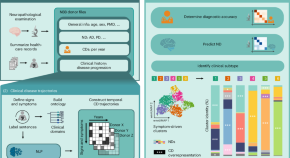
Revealing clinical heterogeneity in a large brain bank cohort
Clinical disease trajectories that describe neuropsychiatric symptoms were identified using natural language processing for 3,042 brain donors diagnosed with various neurodegenerative disorders. Trajectories revealed distinct temporal patterns that result in the identification of new clinical subtypes, and a subset of misdiagnosed donors.
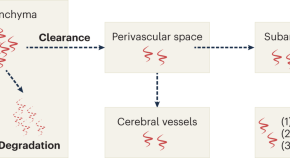
A deeper dive into amyloid clearance by meningeal lymphatic vessels
Acute depletion of meningeal lymphatic vessels impairs the clearance of cerebrospinal fluid and brain macromolecules. A new study by Antila et al. shows that amyloid pathology in Alzheimer’s disease is neither improved nor aggravated by genetic expansion or depletion of meningeal lymphatic vessels.
- Monica M. Santisteban
- Costantino Iadecola
Related Subjects
- Neurological disorders
Latest Research and Reviews
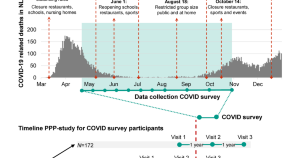
Predictors of stress resilience in Parkinson’s disease and associations with symptom progression
- Anouk van der Heide
- Lisanne J. Dommershuijsen
- Rick C. Helmich
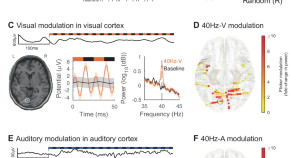
Multisensory flicker modulates widespread brain networks and reduces interictal epileptiform discharges
Repetitive audio-visual stimulation, or sensory flicker, can modulate oscillations in a non-invasive manner. Here the authors demonstrate the potential of flicker in individuals with epilepsy undergoing intracranial seizure monitoring.
- Lou T. Blanpain
- Eric R. Cole
- Annabelle C. Singer
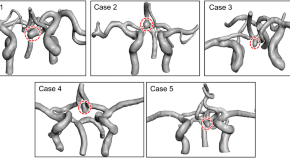
Influence of circle of Willis modeling on hemodynamic parameters in anterior communicating artery aneurysms and recommendations for model selection
- Hyeondong Yang
- Kwang-Chun Cho
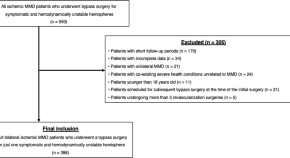
Natural course of hemodynamically stable hemispheres contralateral to operated hemispheres in adult patients with ischemic moyamoya diseases
- Young Sill Kang
- Won-Sang Cho
- Jeong Eun Kim

Fetal and neonatal outcomes of posterior fossa anomalies: a retrospective cohort study
- Hanan Alsehli
- Saeed Mastour Alshahrani
- Duaa Baarmah
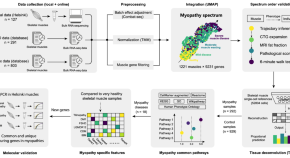
Revealing myopathy spectrum: integrating transcriptional and clinical features of human skeletal muscles with varying health conditions
This study analysed bulk RNA-sequencing data from 1221 human skeletal muscles and validated the progressive spectrum of myopathy diseases.
- Huahua Zhong
- Veronica Sian
News and Comment
A response to “toward a better understanding and terminology of transcutaneous spinal cord stimulation”.
- Auwal Bello Hassan
- Auwal Abdullahi
- Musa Sani Danazumi
Approval of omaveloxolone for Friedreich ataxia
The recent approval of omaveloxolone for the treatment of Friedreich ataxia in the USA and Europe represents an important milestone in the field of rare neurological diseases. However, many challenges lie ahead, including the translation of trial results into clinical practice, and the management of patients’ expectations.
- Sylvia Boesch
- Elisabetta Indelicato
Toward a better understanding and terminology of transcutaneous spinal cord stimulation techniques
- Juan José Fernández-Pérez
- Gülser Cinbaz
- Julio Gómez-Soriano
Towards the era of biological biomarkers for Parkinson disease
Since its instigation in cancer research in the 1930s, the disease-staging concept has become a crucial tool in clinical research and medical practice. Two new papers have proposed biological staging and classification systems based on α-synuclein pathology for Parkinson disease and related conditions.
- Nobutaka Hattori
Quick links
- Explore articles by subject
- Guide to authors
- Editorial policies
Have a language expert improve your writing
Run a free plagiarism check in 10 minutes, generate accurate citations for free.
- Knowledge Base
- Research paper
Writing a Research Paper Introduction | Step-by-Step Guide
Published on September 24, 2022 by Jack Caulfield . Revised on March 27, 2023.

The introduction to a research paper is where you set up your topic and approach for the reader. It has several key goals:
- Present your topic and get the reader interested
- Provide background or summarize existing research
- Position your own approach
- Detail your specific research problem and problem statement
- Give an overview of the paper’s structure
The introduction looks slightly different depending on whether your paper presents the results of original empirical research or constructs an argument by engaging with a variety of sources.
Instantly correct all language mistakes in your text
Upload your document to correct all your mistakes in minutes

Table of contents
Step 1: introduce your topic, step 2: describe the background, step 3: establish your research problem, step 4: specify your objective(s), step 5: map out your paper, research paper introduction examples, frequently asked questions about the research paper introduction.
The first job of the introduction is to tell the reader what your topic is and why it’s interesting or important. This is generally accomplished with a strong opening hook.
The hook is a striking opening sentence that clearly conveys the relevance of your topic. Think of an interesting fact or statistic, a strong statement, a question, or a brief anecdote that will get the reader wondering about your topic.
For example, the following could be an effective hook for an argumentative paper about the environmental impact of cattle farming:
A more empirical paper investigating the relationship of Instagram use with body image issues in adolescent girls might use the following hook:
Don’t feel that your hook necessarily has to be deeply impressive or creative. Clarity and relevance are still more important than catchiness. The key thing is to guide the reader into your topic and situate your ideas.
The only proofreading tool specialized in correcting academic writing - try for free!
The academic proofreading tool has been trained on 1000s of academic texts and by native English editors. Making it the most accurate and reliable proofreading tool for students.

Try for free
This part of the introduction differs depending on what approach your paper is taking.
In a more argumentative paper, you’ll explore some general background here. In a more empirical paper, this is the place to review previous research and establish how yours fits in.
Argumentative paper: Background information
After you’ve caught your reader’s attention, specify a bit more, providing context and narrowing down your topic.
Provide only the most relevant background information. The introduction isn’t the place to get too in-depth; if more background is essential to your paper, it can appear in the body .
Empirical paper: Describing previous research
For a paper describing original research, you’ll instead provide an overview of the most relevant research that has already been conducted. This is a sort of miniature literature review —a sketch of the current state of research into your topic, boiled down to a few sentences.
This should be informed by genuine engagement with the literature. Your search can be less extensive than in a full literature review, but a clear sense of the relevant research is crucial to inform your own work.
Begin by establishing the kinds of research that have been done, and end with limitations or gaps in the research that you intend to respond to.
The next step is to clarify how your own research fits in and what problem it addresses.
Argumentative paper: Emphasize importance
In an argumentative research paper, you can simply state the problem you intend to discuss, and what is original or important about your argument.
Empirical paper: Relate to the literature
In an empirical research paper, try to lead into the problem on the basis of your discussion of the literature. Think in terms of these questions:
- What research gap is your work intended to fill?
- What limitations in previous work does it address?
- What contribution to knowledge does it make?
You can make the connection between your problem and the existing research using phrases like the following.
Now you’ll get into the specifics of what you intend to find out or express in your research paper.
The way you frame your research objectives varies. An argumentative paper presents a thesis statement, while an empirical paper generally poses a research question (sometimes with a hypothesis as to the answer).
Argumentative paper: Thesis statement
The thesis statement expresses the position that the rest of the paper will present evidence and arguments for. It can be presented in one or two sentences, and should state your position clearly and directly, without providing specific arguments for it at this point.
Empirical paper: Research question and hypothesis
The research question is the question you want to answer in an empirical research paper.
Present your research question clearly and directly, with a minimum of discussion at this point. The rest of the paper will be taken up with discussing and investigating this question; here you just need to express it.
A research question can be framed either directly or indirectly.
- This study set out to answer the following question: What effects does daily use of Instagram have on the prevalence of body image issues among adolescent girls?
- We investigated the effects of daily Instagram use on the prevalence of body image issues among adolescent girls.
If your research involved testing hypotheses , these should be stated along with your research question. They are usually presented in the past tense, since the hypothesis will already have been tested by the time you are writing up your paper.
For example, the following hypothesis might respond to the research question above:
Here's why students love Scribbr's proofreading services
Discover proofreading & editing
The final part of the introduction is often dedicated to a brief overview of the rest of the paper.
In a paper structured using the standard scientific “introduction, methods, results, discussion” format, this isn’t always necessary. But if your paper is structured in a less predictable way, it’s important to describe the shape of it for the reader.
If included, the overview should be concise, direct, and written in the present tense.
- This paper will first discuss several examples of survey-based research into adolescent social media use, then will go on to …
- This paper first discusses several examples of survey-based research into adolescent social media use, then goes on to …
Full examples of research paper introductions are shown in the tabs below: one for an argumentative paper, the other for an empirical paper.
- Argumentative paper
- Empirical paper
Are cows responsible for climate change? A recent study (RIVM, 2019) shows that cattle farmers account for two thirds of agricultural nitrogen emissions in the Netherlands. These emissions result from nitrogen in manure, which can degrade into ammonia and enter the atmosphere. The study’s calculations show that agriculture is the main source of nitrogen pollution, accounting for 46% of the country’s total emissions. By comparison, road traffic and households are responsible for 6.1% each, the industrial sector for 1%. While efforts are being made to mitigate these emissions, policymakers are reluctant to reckon with the scale of the problem. The approach presented here is a radical one, but commensurate with the issue. This paper argues that the Dutch government must stimulate and subsidize livestock farmers, especially cattle farmers, to transition to sustainable vegetable farming. It first establishes the inadequacy of current mitigation measures, then discusses the various advantages of the results proposed, and finally addresses potential objections to the plan on economic grounds.
The rise of social media has been accompanied by a sharp increase in the prevalence of body image issues among women and girls. This correlation has received significant academic attention: Various empirical studies have been conducted into Facebook usage among adolescent girls (Tiggermann & Slater, 2013; Meier & Gray, 2014). These studies have consistently found that the visual and interactive aspects of the platform have the greatest influence on body image issues. Despite this, highly visual social media (HVSM) such as Instagram have yet to be robustly researched. This paper sets out to address this research gap. We investigated the effects of daily Instagram use on the prevalence of body image issues among adolescent girls. It was hypothesized that daily Instagram use would be associated with an increase in body image concerns and a decrease in self-esteem ratings.
The introduction of a research paper includes several key elements:
- A hook to catch the reader’s interest
- Relevant background on the topic
- Details of your research problem
and your problem statement
- A thesis statement or research question
- Sometimes an overview of the paper
Don’t feel that you have to write the introduction first. The introduction is often one of the last parts of the research paper you’ll write, along with the conclusion.
This is because it can be easier to introduce your paper once you’ve already written the body ; you may not have the clearest idea of your arguments until you’ve written them, and things can change during the writing process .
The way you present your research problem in your introduction varies depending on the nature of your research paper . A research paper that presents a sustained argument will usually encapsulate this argument in a thesis statement .
A research paper designed to present the results of empirical research tends to present a research question that it seeks to answer. It may also include a hypothesis —a prediction that will be confirmed or disproved by your research.
Cite this Scribbr article
If you want to cite this source, you can copy and paste the citation or click the “Cite this Scribbr article” button to automatically add the citation to our free Citation Generator.
Caulfield, J. (2023, March 27). Writing a Research Paper Introduction | Step-by-Step Guide. Scribbr. Retrieved April 9, 2024, from https://www.scribbr.com/research-paper/research-paper-introduction/
Is this article helpful?

Jack Caulfield
Other students also liked, writing strong research questions | criteria & examples, writing a research paper conclusion | step-by-step guide, research paper format | apa, mla, & chicago templates, unlimited academic ai-proofreading.
✔ Document error-free in 5minutes ✔ Unlimited document corrections ✔ Specialized in correcting academic texts
Read our research on: Gun Policy | International Conflict | Election 2024
Regions & Countries
Changing partisan coalitions in a politically divided nation, party identification among registered voters, 1994-2023.
Pew Research Center conducted this analysis to explore partisan identification among U.S. registered voters across major demographic groups and how voters’ partisan affiliation has shifted over time. It also explores the changing composition of voters overall and the partisan coalitions.
For this analysis, we used annual totals of data from Pew Research Center telephone surveys (1994-2018) and online surveys (2019-2023) among registered voters. All telephone survey data was adjusted to account for differences in how people respond to surveys on the telephone compared with online surveys (refer to Appendix A for details).
All online survey data is from the Center’s nationally representative American Trends Panel . The surveys were conducted in both English and Spanish. Each survey is weighted to be representative of the U.S. adult population by gender, age, education, race and ethnicity and other categories. Read more about the ATP’s methodology , as well as how Pew Research Center measures many of the demographic categories used in this report .
The contours of the 2024 political landscape are the result of long-standing patterns of partisanship, combined with the profound demographic changes that have reshaped the United States over the past three decades.
Many of the factors long associated with voters’ partisanship remain firmly in place. For decades, gender, race and ethnicity, and religious affiliation have been important dividing lines in politics. This continues to be the case today.
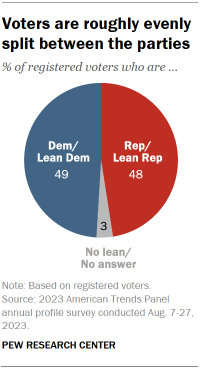
Yet there also have been profound changes – in some cases as a result of demographic change, in others because of dramatic shifts in the partisan allegiances of key groups.
The combined effects of change and continuity have left the country’s two major parties at virtual parity: About half of registered voters (49%) identify as Democrats or lean toward the Democratic Party, while 48% identify as Republicans or lean Republican.
In recent decades, neither party has had a sizable advantage, but the Democratic Party has lost the edge it maintained from 2017 to 2021. (Explore this further in Chapter 1 . )
Pew Research Center’s comprehensive analysis of party identification among registered voters – based on hundreds of thousands of interviews conducted over the past three decades – tracks the changes in the country and the parties since 1994. Among the major findings:
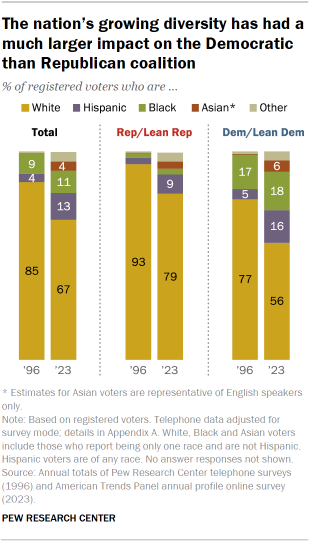
The partisan coalitions are increasingly different. Both parties are more racially and ethnically diverse than in the past. However, this has had a far greater impact on the composition of the Democratic Party than the Republican Party.
The share of voters who are Hispanic has roughly tripled since the mid-1990s; the share who are Asian has increased sixfold over the same period. Today, 44% of Democratic and Democratic-leaning voters are Hispanic, Black, Asian, another race or multiracial, compared with 20% of Republicans and Republican leaners. However, the Democratic Party’s advantages among Black and Hispanic voters, in particular, have narrowed somewhat in recent years. (Explore this further in Chapter 8 .)
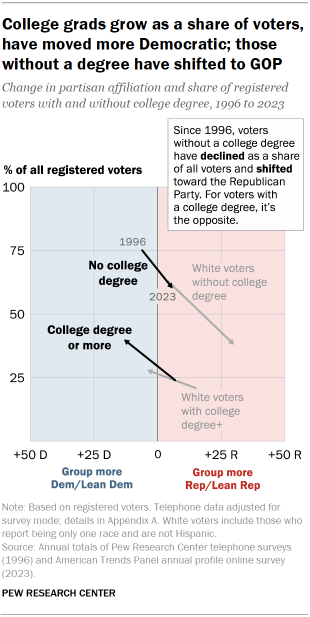
Education and partisanship: The share of voters with a four-year bachelor’s degree keeps increasing, reaching 40% in 2023. And the gap in partisanship between voters with and without a college degree continues to grow, especially among White voters. More than six-in-ten White voters who do not have a four-year degree (63%) associate with the Republican Party, which is up substantially over the past 15 years. White college graduates are closely divided; this was not the case in the 1990s and early 2000s, when they mostly aligned with the GOP. (Explore this further in Chapter 2 .)
Beyond the gender gap: By a modest margin, women voters continue to align with the Democratic Party (by 51% to 44%), while nearly the reverse is true among men (52% align with the Republican Party, 46% with the Democratic Party). The gender gap is about as wide among married men and women. The gap is wider among men and women who have never married; while both groups are majority Democratic, 37% of never-married men identify as Republicans or lean toward the GOP, compared with 24% of never-married women. (Explore this further in Chapter 3 .)
A divide between old and young: Today, each younger age cohort is somewhat more Democratic-oriented than the one before it. The youngest voters (those ages 18 to 24) align with the Democrats by nearly two-to-one (66% to 34% Republican or lean GOP); majorities of older voters (those in their mid-60s and older) identify as Republicans or lean Republican. While there have been wide age divides in American politics over the last two decades, this wasn’t always the case; in the 1990s there were only very modest age differences in partisanship. (Explore this further in Chapter 4 .)
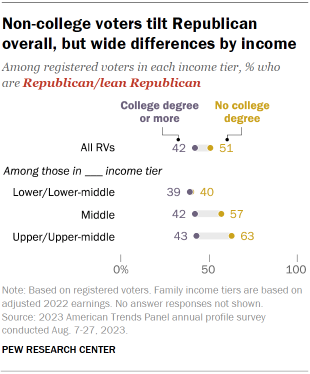
Education and family income: Voters without a college degree differ substantially by income in their party affiliation. Those with middle, upper-middle and upper family incomes tend to align with the GOP. A majority with lower and lower-middle incomes identify as Democrats or lean Democratic. There are no meaningful differences in partisanship among voters with at least a four-year bachelor’s degree; across income categories, majorities of college graduate voters align with the Democratic Party. (Explore this further in Chapter 6 .)
Rural voters move toward the GOP, while the suburbs remain divided: In 2008, when Barack Obama sought his first term as president, voters in rural counties were evenly split in their partisan loyalties. Today, Republicans hold a 25 percentage point advantage among rural residents (60% to 35%). There has been less change among voters in urban counties, who are mostly Democratic by a nearly identical margin (60% to 37%). The suburbs – perennially a political battleground – remain about evenly divided. (Explore this further in Chapter 7 . )
Growing differences among religious groups: Mirroring movement in the population overall, the share of voters who are religiously unaffiliated has grown dramatically over the past 15 years. These voters, who have long aligned with the Democratic Party, have become even more Democratic over time: Today 70% identify as Democrats or lean Democratic. In contrast, Republicans have made gains among several groups of religiously affiliated voters, particularly White Catholics and White evangelical Protestants. White evangelical Protestants now align with the Republican Party by about a 70-point margin (85% to 14%). (Explore this further in Chapter 5 .)
What this report tells us – and what it doesn’t
In most cases, the partisan allegiances of voters do not change a great deal from year to year. Yet as this study shows, the long-term shifts in party identification are substantial and say a great deal about how the country – and its political parties – have changed since the 1990s.

The steadily growing alignment between demographics and partisanship reveals an important aspect of steadily growing partisan polarization. Republicans and Democrats do not just hold different beliefs and opinions about major issues , they are much more different racially, ethnically, geographically and in educational attainment than they used to be.
Yet over this period, there have been only modest shifts in overall partisan identification. Voters remain evenly divided, even as the two parties have grown further apart. The continuing close division in partisan identification among voters is consistent with the relatively narrow margins in the popular votes in most national elections over the past three decades.
Partisan identification provides a broad portrait of voters’ affinities and loyalties. But while it is indicative of voters’ preferences, it does not perfectly predict how people intend to vote in elections, or whether they will vote. In the coming months, Pew Research Center will release reports analyzing voters’ preferences in the presidential election, their engagement with the election and the factors behind candidate support.
Next year, we will release a detailed study of the 2024 election, based on validated voters from the Center’s American Trends Panel. It will examine the demographic composition and vote choices of the 2024 electorate and will provide comparisons to the 2020 and 2016 validated voter studies.
The partisan identification study is based on annual totals from surveys conducted on the Center’s American Trends Panel from 2019 to 2023 and telephone surveys conducted from 1994 to 2018. The survey data was adjusted to account for differences in how the surveys were conducted. For more information, refer to Appendix A .
Previous Pew Research Center analyses of voters’ party identification relied on telephone survey data. This report, for the first time, combines data collected in telephone surveys with data from online surveys conducted on the Center’s nationally representative American Trends Panel.
Directly comparing answers from online and telephone surveys is complex because there are differences in how questions are asked of respondents and in how respondents answer those questions. Together these differences are known as “mode effects.”
As a result of mode effects, it was necessary to adjust telephone trends for leaned party identification in order to allow for direct comparisons over time.
In this report, telephone survey data from 1994 to 2018 is adjusted to align it with online survey responses. In 2014, Pew Research Center randomly assigned respondents to answer a survey by telephone or online. The party identification data from this survey was used to calculate an adjustment for differences between survey mode, which is applied to all telephone survey data in this report.
Please refer to Appendix A for more details.
Add Pew Research Center to your Alexa
Say “Alexa, enable the Pew Research Center flash briefing”
Report Materials
Table of contents, behind biden’s 2020 victory, a voter data resource: detailed demographic tables about verified voters in 2016, 2018, what the 2020 electorate looks like by party, race and ethnicity, age, education and religion, interactive map: the changing racial and ethnic makeup of the u.s. electorate, in changing u.s. electorate, race and education remain stark dividing lines, most popular.
About Pew Research Center Pew Research Center is a nonpartisan fact tank that informs the public about the issues, attitudes and trends shaping the world. It conducts public opinion polling, demographic research, media content analysis and other empirical social science research. Pew Research Center does not take policy positions. It is a subsidiary of The Pew Charitable Trusts .
After being insulted, writing down your feelings on paper then getting rid of it reduces anger
A research group in Japan has discovered that writing down one's reaction to a negative incident on a piece of paper and then shredding it or throwing it away reduces feelings of anger.
"We expected that our method would suppress anger to some extent," lead researcher Nobuyuki Kawai said. "However, we were amazed that anger was eliminated almost entirely."
This research is important because controlling anger at home and in the workplace can reduce negative consequences in our jobs and personal lives. Unfortunately, many anger management techniques proposed by specialists lack empirical research support. They can also be difficult to recall when angry.
The results of this study, published in Scientific Reports , are the culmination of years of previous research on the association between the written word and anger reduction. It builds on work showing how interactions with physical objects can control a person's mood.
For their project, Kawai and his graduate student Yuta Kanaya, both at the Graduate School of Informatics, Nagoya University, asked participants to write brief opinions about important social problems, such as whether smoking in public should be outlawed. They then told them that a doctoral student at Nagoya University would evaluate their writing.
However, the doctoral students doing the evaluation were plants. Regardless of what the participants wrote, the evaluators scored them low on intelligence, interest, friendliness, logic, and rationality. To really drive home the point, the doctoral students also wrote the same insulting comment: "I cannot believe an educated person would think like this. I hope this person learns something while at the university."
After handing out these negative comments, the researchers asked the participants to write their thoughts on the feedback, focusing on what triggered their emotions. Finally, one group of participants was told to either dispose of the paper they wrote in a trash can or keep it in a file on their desk. A second group was told to destroy the document in a shredder or put it in a plastic box.
The students were then asked to rate their anger after the insult and after either disposing of or keeping the paper. As expected, all participants reported a higher level of anger after receiving insulting comments. However, the anger levels of the individuals who discarded their paper in the trash can or shredded it returned to their initial state after disposing of the paper. Meanwhile, the participants who held on to a hard copy of the insult experienced only a small decrease in their overall anger.
Kawai imagines using his research to help businesspeople who find themselves in stressful situations. "This technique could be applied in the moment by writing down the source of anger as if taking a memo and then throwing it away when one feels angry in a business situation," he explained.
Along with its practical benefits, this discovery may shed light on the origins of the Japanese cultural tradition known as hakidashisara ( hakidashi refers to the purging or spitting out of something, and sara refers to a dish or plate) at the Hiyoshi shrine in Kiyosu, Aichi Prefecture, just outside of Nagoya. Hakidashisara is an annual festival where people smash small discs representing things that make them angry. Their findings may explain the feeling of relief that participants report after leaving the festival.
- Anger Management
- Social Psychology
- Disorders and Syndromes
- Educational Psychology
- Consumer Behavior
- Anger management
- Social psychology
- Cognitive dissonance
- Self-awareness
- Obsessive-compulsive disorder
- Collaboration
Story Source:
Materials provided by Nagoya University . Note: Content may be edited for style and length.
Journal Reference :
- Yuta Kanaya, Nobuyuki Kawai. Anger is eliminated with the disposal of a paper written because of provocation . Scientific Reports , 2024; 14 (1) DOI: 10.1038/s41598-024-57916-z
Cite This Page :
Explore More
- Pacific Cities Much Older Than Previously ...
- The Milky Way in Ancient Egyptian Mythology
- Physical Activity Best in the Evening
- How the Body Switches out of 'Fight' Mode
- New Drug Prevents Flu-Related Lung Damage
- 3D Mouth of an Ancient Jawless Fish
- Connecting Lab-Grown Brain Cells
- Device: Self-Healing Materials, Drug Delivery
- How We Perceive Bitter Taste
- Next-Generation Digital Displays
Trending Topics
Strange & offbeat.
Prestigious cancer research institute has retracted 7 studies amid controversy over errors

Seven studies from researchers at the prestigious Dana-Farber Cancer Institute have been retracted over the last two months after a scientist blogger alleged that images used in them had been manipulated or duplicated.
The retractions are the latest development in a monthslong controversy around research at the Boston-based institute, which is a teaching affiliate of Harvard Medical School.
The issue came to light after Sholto David, a microbiologist and volunteer science sleuth based in Wales, published a scathing post on his blog in January, alleging errors and manipulations of images across dozens of papers produced primarily by Dana-Farber researchers . The institute acknowledged errors and subsequently announced that it had requested six studies to be retracted and asked for corrections in 31 more papers. Dana-Farber also said, however, that a review process for errors had been underway before David’s post.
Now, at least one more study has been retracted than Dana-Farber initially indicated, and David said he has discovered an additional 30 studies from authors affiliated with the institute that he believes contain errors or image manipulations and therefore deserve scrutiny.
The episode has imperiled the reputation of a major cancer research institute and raised questions about one high-profile researcher there, Kenneth Anderson, who is a senior author on six of the seven retracted studies.
Anderson is a professor of medicine at Harvard Medical School and the director of the Jerome Lipper Multiple Myeloma Center at Dana-Farber. He did not respond to multiple emails or voicemails requesting comment.
The retractions and new allegations add to a larger, ongoing debate in science about how to protect scientific integrity and reduce the incentives that could lead to misconduct or unintentional mistakes in research.
The Dana-Farber Cancer Institute has moved relatively swiftly to seek retractions and corrections.
“Dana-Farber is deeply committed to a culture of accountability and integrity, and as an academic research and clinical care organization we also prioritize transparency,” Dr. Barrett Rollins, the institute’s integrity research officer, said in a statement. “However, we are bound by federal regulations that apply to all academic medical centers funded by the National Institutes of Health among other federal agencies. Therefore, we cannot share details of internal review processes and will not comment on personnel issues.”
The retracted studies were originally published in two journals: One in the Journal of Immunology and six in Cancer Research. Six of the seven focused on multiple myeloma, a form of cancer that develops in plasma cells. Retraction notices indicate that Anderson agreed to the retractions of the papers he authored.
Elisabeth Bik, a microbiologist and longtime image sleuth, reviewed several of the papers’ retraction statements and scientific images for NBC News and said the errors were serious.
“The ones I’m looking at all have duplicated elements in the photos, where the photo itself has been manipulated,” she said, adding that these elements were “signs of misconduct.”
Dr. John Chute, who directs the division of hematology and cellular therapy at Cedars-Sinai Medical Center and has contributed to studies about multiple myeloma, said the papers were produced by pioneers in the field, including Anderson.
“These are people I admire and respect,” he said. “Those were all high-impact papers, meaning they’re highly read and highly cited. By definition, they have had a broad impact on the field.”
Chute said he did not know the authors personally but had followed their work for a long time.
“Those investigators are some of the leading people in the field of myeloma research and they have paved the way in terms of understanding our biology of the disease,” he said. “The papers they publish lead to all kinds of additional work in that direction. People follow those leads and industry pays attention to that stuff and drug development follows.”
The retractions offer additional evidence for what some science sleuths have been saying for years: The more you look for errors or image manipulation, the more you might find, even at the top levels of science.
Scientific images in papers are typically used to present evidence of an experiment’s results. Commonly, they show cells or mice; other types of images show key findings like western blots — a laboratory method that identifies proteins — or bands of separated DNA molecules in gels.
Science sleuths sometimes examine these images for irregular patterns that could indicate errors, duplications or manipulations. Some artificial intelligence companies are training computers to spot these kinds of problems, as well.
Duplicated images could be a sign of sloppy lab work or data practices. Manipulated images — in which a researcher has modified an image heavily with photo editing tools — could indicate that images have been exaggerated, enhanced or altered in an unethical way that could change how other scientists interpret a study’s findings or scientific meaning.
Top scientists at big research institutions often run sprawling laboratories with lots of junior scientists. Critics of science research and publishing systems allege that a lack of opportunities for young scientists, limited oversight and pressure to publish splashy papers that can advance careers could incentivize misconduct.
These critics, along with many science sleuths, allege that errors or sloppiness are too common , that research organizations and authors often ignore concerns when they’re identified, and that the path from complaint to correction is sluggish.
“When you look at the amount of retractions and poor peer review in research today, the question is, what has happened to the quality standards we used to think existed in research?” said Nick Steneck, an emeritus professor at the University of Michigan and an expert on science integrity.
David told NBC News that he had shared some, but not all, of his concerns about additional image issues with Dana-Farber. He added that he had not identified any problems in four of the seven studies that have been retracted.
“It’s good they’ve picked up stuff that wasn’t in the list,” he said.
NBC News requested an updated tally of retractions and corrections, but Ellen Berlin, a spokeswoman for Dana-Farber, declined to provide a new list. She said that the numbers could shift and that the institute did not have control over the form, format or timing of corrections.
“Any tally we give you today might be different tomorrow and will likely be different a week from now or a month from now,” Berlin said. “The point of sharing numbers with the public weeks ago was to make clear to the public that Dana-Farber had taken swift and decisive action with regard to the articles for which a Dana-Farber faculty member was primary author.”
She added that Dana-Farber was encouraging journals to correct the scientific record as promptly as possible.
Bik said it was unusual to see a highly regarded U.S. institution have multiple papers retracted.
“I don’t think I’ve seen many of those,” she said. “In this case, there was a lot of public attention to it and it seems like they’re responding very quickly. It’s unusual, but how it should be.”
Evan Bush is a science reporter for NBC News. He can be reached at [email protected].

IMAGES
VIDEO
COMMENTS
Breaking science news and articles on global warming, extrasolar planets, stem cells, bird flu, autism, nanotechnology, dinosaurs, evolution -- the latest discoveries ...
A two-dose regimen of BNT162b2 (30 μg per dose, given 21 days apart) was found to be safe and 95% effective against Covid-19. The vaccine met both primary efficacy end points, with more than a 99 ...
In a paper published in Nature in early 2020, Krasnow and his colleagues including then-graduate student Kyle Travaglini, PhD — who is also one of the new study's co-lead authors along with MD-PhD student Timothy Wu — described a technique they'd worked out for isolating fresh human lungs; dissociating the cells from one another; and characterizing them, one by one, on the basis of ...
A phenome-wide association and Mendelian randomisation study of alcohol use variants in a diverse cohort comprising over 3 million individuals. Our work demonstrates that polymorphisms in genes encoding alcohol metabolising enzymes affect multiple domains of health beyond alcohol-related behaviours.
A total of 3260 patients were assigned to receive empagliflozin and 3262 to receive placebo. During a median follow-up of 17.9 months, a first hospitalization for heart failure or death from any ...
The Coronavirus Efficacy (COVE) phase 3 trial was launched in late July 2020 to assess the safety and efficacy of the mRNA-1273 vaccine in preventing SARS-CoV-2 infection. An independent data and ...
Read the latest Research articles from Nature ... University News (195) Year. All. All; 2024 (336) ... Studies on the µ-opioid receptor using fluorescent labelling of intracellular residues and ...
A histological and diceCT-derived 3D reconstruction of the avian visual thalamofugal pathway. Parker J. Straight. Paul M. Gignac. Wayne J. Kuenzel. Article Open Access 11 Apr 2024.
In this rapid living systematic evidence synthesis and meta-analysis, we searched EMBASE and the US National Institutes of Health's iSearch COVID-19 Portfolio, supplemented by manual searches of COVID-19-specific sources, until Dec 1, 2022, for studies that reported vaccine effectiveness immediately and at least 112 days after a primary vaccine series or at least 84 days after a booster dose.
The research team used the trained model to create a library of 211 new sequences. Each was optimized for a desired function, primarily an increase in the efficiency of translation. Those proteins, like the spike protein targeted by COVID-19 vaccines, drive the immune response to infectious disease.
That's really where the fun of this job is, to hear new ideas and see how people discuss and debate them. Health & Medicine. Media Contact. Fred Mamoun: [email protected], 203-436-2643. In a new paper, Yale researchers propose that brain states and brain waves may be two parts of the same occurrence — and they discuss why that matters.
Research News New advances in science, medicine, ... but a new study released this week in Nature may have an answer: ... each holding a sheet of paper. The papers overlap in the center and, like ...
JAMA - The Latest Medical Research, Reviews, and Guidelines. Home New Online Issues For Authors. Editor's Choice: Introducing the JAMA Summit. Viewpoint Including Pregnant and Lactating Women in Clinical Research: Moving Beyond Legal Liability Margaret Foster Riley, JD. April 10, 2024.
Chemistry articles from across Nature Portfolio. Chemistry is a branch of science that involves the study of the composition, structure and properties of matter. Often known as the central science ...
The downsides, however, are that 1) hypoglycemia is a constant threat, 2) proper insulin doses are not trivial to calculate, 3) compliance can vary especially in children and young adults, and 4) there can be side effects of a variety of types. Nonetheless, insulin therapy remains a mainstay treatment of diabetes.
News about Research, including commentary and archival articles published in The New York Times.
In a nutshell, the outcome of the team's research is a handy periodic table of primes, or the PTP, pointing the locations of prime numbers. The research is available as a working paper in the SSRN ...
Credit: Daniel J. Field. But birds were prepared to deceive us. In a pair of new research papers released today, April 1, scientists reveal that another event 65 million years ago misled them about the true family history of birds. They discovered that a section of one chromosome spent millions of years frozen in time, and it refused to mix ...
Of the 16 selected research papers, there were a research focus on adults, gender, and preadolescents [10-19]. ... Social media is a new study that is rapidly growing and gaining popularity. Thus, there are many unexplored and unexpected constructive answers associated with it. Lately, studies have found that using social media platforms can ...
Youth Cancer Death Rate Down in U.S. Cancer mortality among youth continues to fall in the country, though data points to differences by age, race and gender. Steven Ross Johnson Nov. 16, 2023 ...
The New England Journal of Medicine (NEJM) is a weekly general medical journal that publishes new medical research and review articles, and editorial opinion on a wide variety of topics of ...
Access 160+ million publications and connect with 25+ million researchers. Join for free and gain visibility by uploading your research.
The purpose of a research paper is to present the results of a study or investigation in a clear, concise, and structured manner. Research papers are written to communicate new knowledge, ideas, or findings to a specific audience, such as researchers, scholars, practitioners, or policymakers. The primary purposes of a research paper are:
Develop a thesis statement. Create a research paper outline. Write a first draft of the research paper. Write the introduction. Write a compelling body of text. Write the conclusion. The second draft. The revision process. Research paper checklist.
Large-scale whole-exome sequencing of neuropsychiatric diseases and traits in 350,770 adults. In this large-scale exome-wide association study, Deng, Wu, Yang, He et al. report genetic ...
Table of contents. Step 1: Introduce your topic. Step 2: Describe the background. Step 3: Establish your research problem. Step 4: Specify your objective (s) Step 5: Map out your paper. Research paper introduction examples. Frequently asked questions about the research paper introduction.
Yet as this study shows, the long-term shifts in party identification are substantial and say a great deal about how the country - and its political parties - have changed since the 1990s. The steadily growing alignment between demographics and partisanship reveals an important aspect of steadily growing partisan polarization.
A research group in Japan has discovered that writing down one's reaction to a negative incident on a piece of paper and then shredding it or throwing it away reduces feelings of anger.
VOL. 387 NO. 11. The coronavirus disease 2019 (Covid-19) pandemic has claimed an estimated 15 million lives, including more than 1 million lives in the United States alone. The rapid development ...
April 9, 2024, 2:32 PM PDT. By Evan Bush. Seven studies from researchers at the prestigious Dana-Farber Cancer Institute have been retracted over the last two months after a scientist blogger ...